Encyclopedia of Anti-Revisionism On-Line
U.S. Anti-Revisionism
The New Communist Movement: Origins and Early Groups, 1969-1974
The New Communist Movement emerged in the late 1960’s, as the civil rights and anti-Vietnam war movements became increasingly radicalized. Students and youth began to reject ’working within the system’ and lost faith in electoral politics and nonviolent tactics. These activists gravitated toward organizing in working class settings: workplaces, particularly factories; neighborhoods; community colleges, and military bases. Though many things helped trigger the emergence of a new movement of communists, four especially significant influences stand out:
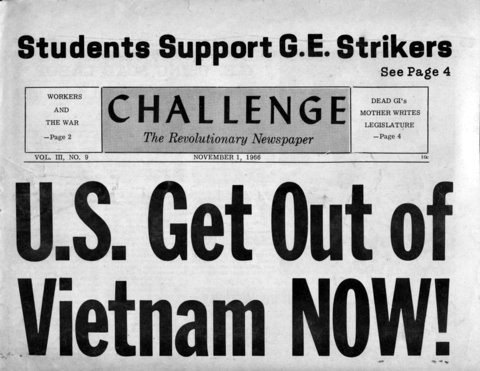
– The Cuban Revolution, the Vietnamese struggle, and other national liberation movements helped many people see both the imperialist nature of U.S. global actions, and challenged a great deal of anti-communist mythology that had held the stage in the 1950s;
– The Great Proletarian Cultural Revolution in China suddenly made it possible to think about a communist alternative to the model presented by the societies of Eastern Europe and the Soviet Union;
– The Black liberation struggle in the U.S. relentlessly revealed the crimes of racism and class exploitation built into U.S. society, and tore away many naive notions of an America that was upwardly mobile, inherently just, and generally affluent;
– The radical uprisings of France in May 1968 suggested that revolution might not be for Third World countries alone, and that there were possibilities, in some situations, for large numbers of people to collaborate (even in countries like the U.S.) in a genuinely revolutionary project.
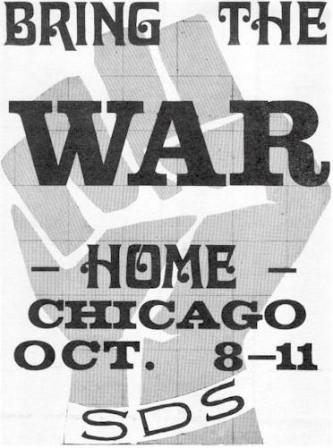
Many of the first recruits to the New Communist Movement came from Students for a Democratic Society (SDS), the largest New Left organization of white students in the country from 1965 to 1969. These SDS members discovered Marxism, often through the efforts of the Progressive Labor Party (PL) [for PL’s background and documents, see “Progressive Labor Movement”], or in the course of advancing New Left theory and practice.
As SDS entered a period of crisis in the late 1960’s, two Revolutionary Youth Movement currents (RYM) emerged as alternatives to PL. RYM I (better known as Weatherman) adopted a politics that increasingly saw white people generally as bought off and therefore likely to be in the enemy camp of the ongoing global collisions. A diverse opposing camp, RYM II, identified with working class organizing, disciplined forms of left organization, and Marxism-Leninism, but rejected what it saw as PL’s sectarianism, anti-nationalism, and “more revolutionary than thou” stance toward everyone from the Black Panther Party to the NLF of South Vietnam. RYM II saw in this alternative synthesis the potential for creating a revolutionary sector among white workers and a revolutionary movement rooted in the larger multinational working class. RYM II was the source of some of the first New Communist Movement groups.
But quite a few other recruits to the New Communist Movement came from radical student groups active among Black, Puerto Rican, Asian and Chicano students. The Student Non-Violent Coordinating Committee (SNCC) produced circles of trained organizers who played an important role in the creation of new communist organizations. And a few older veterans of the Communist Party USA (CPUSA) and earlier anti-revisionist formations like the Provisional Organizing Committee (POC) [for the POC’s background and documents, see “The Second Wave of US Anti-Revisionism, The Provisional Organizing Committee (1956-1962)”], played a mentor role within that process – often hoping to create organizations modeled on earlier stages of the CPUSA, which, in their view had once been more revolutionary, but had been betrayed by political changes over the 1950s.
New Communist Movement groups in the U.S. shared the following characteristics. They:
· identified themselves as coming out of the Marxist-Leninist tradition of the Bolshevik Revolution, the Comintern, and the international Communist movement;
· rejected the Trotskyist strain within that tradition;
· upheld the vanguard role of the proletariat in the fight for socialism, rejecting alternative theories of student or other, non-proletarian vanguards;

· rejected modern revisionism in its theoretical, political, ideological and organizational forms;
· denied the leading role of the CPSU internationally and of the CPUSA nationally as revisionist betrayers of revolutionary Marxism-Leninism;
· They were committed to the creation of a new, non-revisionist, revolutionary Marxist-Leninist communist party, proletarian revolution, and the establishment of the dictatorship of the proletariat in the U.S.
The most important of the early New Communist Movement organizations were the Communist League (CL), the Revolutionary Union (RU) and the October League (ML) (OL). Each group had ties to the New Left, but only CL had roots in earlier anti-revisionism: among its founders were expelled members of the POC in California led by Nelson Peery.
RU began as the Bay Area Revolutionary Union in 1968, and closely identified itself with Mao and the People’s Republic of China. Its origins were similar to numerous working-class organizing ’collectives’ that formed in industrial areas across the US in the wake of SDS collapse which later turned to Marxism-Leninism.
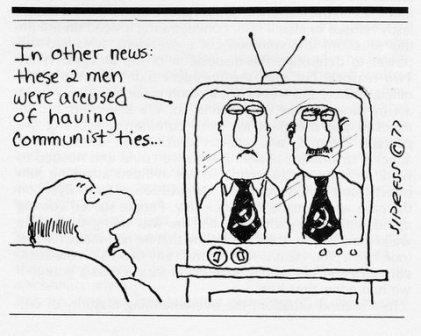
The OL formed from the merger of two collectives led by former leaders of SDS’s RYM II faction. The Georgia Communist League (ML) in Atlanta and the October League in Los Angeles were more focused on studying revolutionary doctrine than the early RU, but shared its determination to become a real force among local workers.
Distinct among early New Communist Movement organizations was the American Communist Workers Movement (Marxist-Leninist). This group, which had its origins in draft resistance and student activism in Cleveland, early on closely identified itself with an international anti-revisionist tendency organized by Hardial Bains, which had previously created anti-revisionist Communist organizations in Canada, Ireland and the United Kingdom.
All of these groups shared a common commitment to building a new multinational, cadre-based vanguard communist party with deep political ties in the working class and oppressed communities.
At the same time, in Chicago, another collective with Marxist politics, a working-class orientation and national ambitions formed out of RYM II: the Sojourner Truth Organization (STO). The early STO had many points in common with the New Communist Movement, but quickly moved in a more unorthodox direction. It began to identify more with post-1968 European revolutionary groups who advocated self-motivated actions by workers such as wildcat strikes and plant takeovers, and alternative-union formations. STO collaborated with like-minded collectives such as Harper’s Ferry Organization in New York City and Worker Unity Organization in St. Louis.
Background Materials
General Surveys
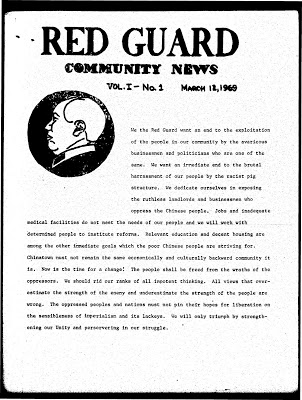
A Critical History of the New Communist Movement, 1969-1979 by Paul Costello
Family Tree Chart of U.S. Anti-Revisionism, 1956-1977 by the Communist Workers Group (Marxist-Leninist)
Tirana Builds an Internationale Part One: The Struggle Against Modern Revisionism; Part Two: The Albanian Intervention; Part Three: Rally for Enver; Part Four: After Enver by woodsmokeblog
Maoism in the United States by Max Elbaum
Turn to the Working Class: The New Left, Black Liberation, and the U.S. Labor Movement (1967-1981) by Kieran Walsh Taylor
Black Like Mao: Red China and Black Revolution by Robin D.G. Kelley and Betsy Esch
“Concrete Analysis of Concrete Conditions”: A Study of the Relationship between the Black Panther Party and Maoism by Chao Ren
What Legacy from the Radical Internationalism of 1968? by Max Elbaum
New Reality is Better Than a New Movie! Committed Documentary and Class Struggle at the End of the American New Left by Zachary Williams
General Primary Materials
American Maoism: Re-emergence and Regroupment by Jon Hillson, Denver Branch, Socialist Workers Party
The History and Present State of the Contemporary Revolutionary Movement in the U.S. by People’s Democracy
Some Lessons from the Family Tree of the New Communist Movement by Dennis O’Neil
Response to Dennis O’Neil by Max Elbaum
Response to Max Elbaum by Dennis O’Neil
Second Response to Dennis O’Neil by Max Elbaum
SDS and RYM II: Antecedents of the New Communist Movement
SDS Split, 1969
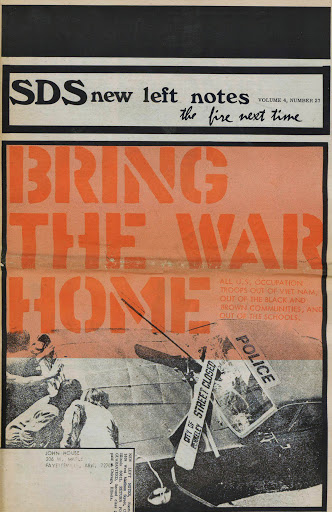
Guardian Editorial: New direction for SDS
Old Left Orthodoxy – Impediment to Revolutionary Progress? [On PL vs. RYM]
Looking Back and Looking Ahead at Revolutionary Youth Movement by Michael Klonsky
Ho Ho Ho Chi Minh, the NLF is gonna win! by Bernardine Dohrn, SDS Inter-Organizational Secretary
PLP: A Critique [published by Old Mole] newspaper
The White Question by Mike Klonsky, SDS National Secretary
SDS is at a radical crossroads by Carl Davidson
Metamorphosis in S.D.S. The New Left is Showing Its Age by Thomas R. Brooks [New York Times, June 15, 1969]
Black liberation and peace debated by SDS by Lincoln Webster Sheffield
National Convention Expels Racist PL, Elects New Officers
Victorious Struggle by Mark Rudd, Jeff Jones and Bill Ayres [New Left Notes, Vol. 4, No. 23, June 25, 1969]
Letter from S.D.S. Leadership
Statement on the Walk-Out [PL Statement on the SDS split]
National Secretary’s Report: RYM Walks Out [PL’s Analysis of the SDS split]
Thoughts on the SDS convention by Lincoln Webster Sheffield
SDS ousts PLP by Jack A. Smith
PL declares split, elects ’SDS’ officers by R.F., Guardian staff correspondent
The ’worker student alliance’ by Randy Furst, Guardian staff correspondent
SDS Deals with the woman question by Margie Stamberg, Guardian staff correspondent
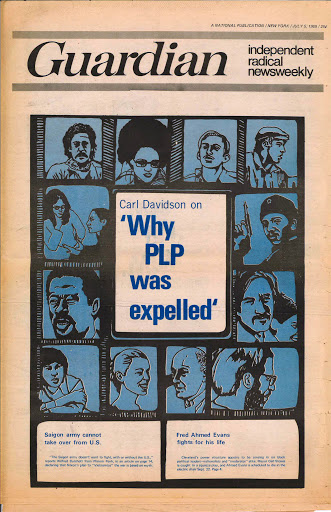
The Real SDS Stands Up by Andrew Kopkind [Hard Times, June 30, 1969]
SDS Convention Split: Three Factions Emerge
The split at the SDS national convention by Mary-Alice Waters
Why SDS Expelled PL by Carl Davidson
Expulsion [Guardian Editorial]
SDS National Convention by Allen Young [Great Speckled Bird]
Education Secretary’s Report: The Boston Strangler: A Paper Tiger by Bill Ayers
The press views SDS at its national convention
SDS and PL differ on the national question by Carl Davidson
SDS [split in Atlanta, Georgia] [Great Speckled Bird, July 21, 1969]
Another view on SDS by Jim Prickett
Reply to Prickett on SDS by Mark Naison
Report on Oakland United Front Conference [New Left Notes, July 30, 1969]
RYM Meets with Police Protection [New Left Notes, July 30, 1969]
Panther leaders blast SDS by Jack A. Smith
Panther Leaders Blast RYM – RYM Leaders Attack White Workers [New Left Notes, August 26, 1969]
California – RYM Falls Flat by Jim Prickett [New Left Notes, August 26, 1969]
SDS Expels PL [RYM Statement on the SDS split]
Spartacist Special Issue on the SDS Split: New Left’s Death Agony
“You’re Either Part of the Problem or Part of the Solution” [The Movement, Vol. 5 No. 7, August 1969]
SDS and the Movement: Where Do We Go From Here? by Jack Weinberg and Jack Gerson [on the SDS split, PL, RYM II, RU]
Warning – RYM May Be Hazardous... to the People [New Left Notes, September 20, 1969]
Two, Three, Many SDS’s by Lenny Glynn
Second Coming [On Progressive Labor and SDS] by Phil Hutchings
700 turn out for national WSA meeting by Carl Davidson
The SDS’s Desolation Row by Jack Gerson [On RU, Weatherman, PL, and RYM II]
Who Are the Bombers? Often the Rulers! by SDS [PL]
SDS Split, 1969, at the local level – Stanford SDS

Radicals Convene. Views Differ In SDS National by Karen Davidson
SDS Position Clarified by Leonard Siegel
Progressive Labor Party: ’All Nationalism Is Reactionary’ by T. H. Andre
Re-Reassessments: What Is Nationalism? by Ivo Banac
Re-Reassessments: Domestic Capitalism by Ivo Banac
Factions Split SDS Meeting In Vicious Shouting Match by Richard Embry
In Search Of The ’Real S.D.S.’ Favoring A Campus Worker-Student Alliance by Doug Hogan
A Letter In Reply by members of RU
WSA And PLP Repudiate Revisionism by Ivo Banac
’New’ SDS Chapter Formed From Split by Richard Embry
Revolutionary Youth Movement II vs. Weatherman
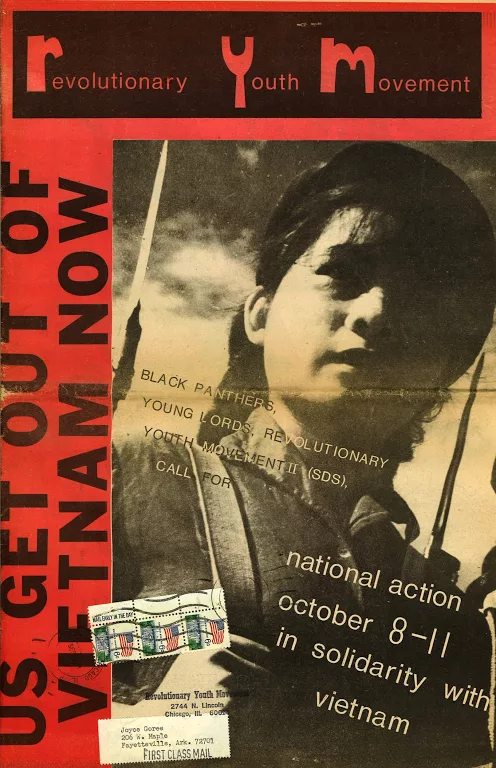
Debate within SDS. RYM II vs. Weatherman
5 proposed principles of SDS unity
Why I Quit by Mike Klonsky [New Left Notes, August 29, 1969]
Goodbye, Mike by Mark Rudd and Terry Robbins [New Left Notes, August 29, 1969]
Take the War to the People
SDS Chicago Oct. 8-11 action under fire by Carl Davidson
RYM-2 meets
Forward or backward? [Guardian Editorial on Weathermen and RYM-2]
A Call to All Proletarian Youth and Proletarian Organizations
Gettin’ It On! – Call to National Action
October Anti-War Actions: Three Views [The Rag, September 29, 1969]
SDS Readies for Chicago
From the New Left [against Weathermen, #1] by Carl Davidson [Guardian, October 4, 1969]
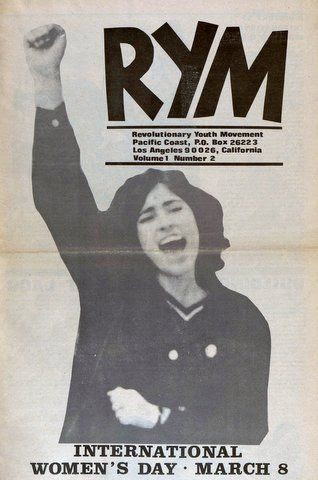
Support grows for fall offensive
From the New Left [against Weathermen, #2] by Carl Davidson
RYM-II, Weathermen Test the Winds of Chicago by LNS [Observation Post, Vol. 46, No. 6, October 16, 1969]
REP Raps. Communication to the Movement (Radical Education Project (REP) on the SDS Split and RYM II-Weather Differences)
Principles, Scminciples by Howie Machtinger (reply to REP)
Weatherman-SDS goes it (very much) alone in ’kick-ass’ brawl by Carl Davidson and Randy Furst
Guardian Viewpoint: Hurricane or Hot Air? Guardian, October 18, 1969
Weatherman conducts a ’war council’
Whither the Weatherman by Carl Davidson
Periodical
Revolutionary Youth Movement newspaper [No. 1]
RYM newspaper [No. 2]
[Back to top]
The Emergence of a New Communist Movement
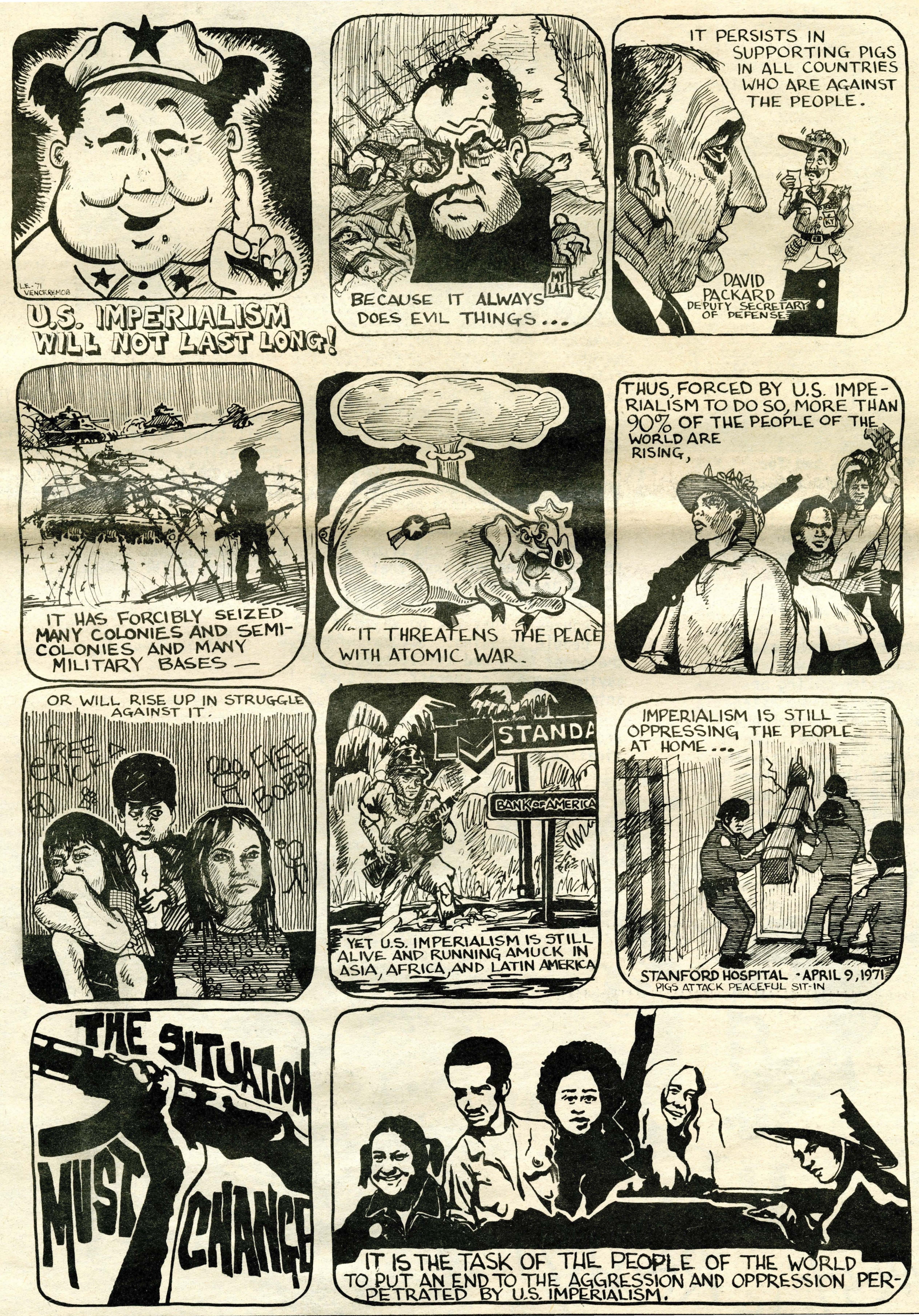
The emergence of the New Communist Movement (NCM) during the period 1969-1972 proceeded on two parallel tracks: local and organizational and national and ideological.
By late-1969-early 1970 it was clear that RYM II would not be able to create a viable national organization. As a result, elements that would go on to participate in the NCM turned their attention to forming local organizations. These included the Bay Area Revolutionary Union in the San Francisco Bay area, the October League in Los Angeles, the Georgia Communist League in Atlanta, and the Sojourner Truth Organization in Chicago. Other preexisting local organizations also moved toward more explicitly Marxism-Leninist positions in this period, including the Young Lords Party in New York and the Black Workers Congress in Detroit.
While all these local groups sought to expand their influence through outreach and publications, their achievements in this period was limited. At the national level, the decisive influence in moving activists toward Marxism-Leninism was played by the Guardian newspaper. Founded in 1948 in association with the Henry Wallace presidential campaign of that year, the paper was transformed into a voice for the New Left in 1968. As such, its staff was relatively diverse, including Marxists, anarchists and others. With the collapse of SDS into Weathermen and RYM II, differences arose within the paper on the future of the left.
In April 1970 anarchists and their allies attempted unsuccessfully to seize control of the Guardian. In the aftermath, Marxists emerged triumphant and the paper became first explicitly Marxist and later, Marxist-Leninist. As illustrated by the texts presented below, in the 1970-1972 period, many of the ideological elements that later would be central to the NCM began to appear in its pages: rejection of individual terrorism, anarchism and social democracy, support for China’s revolutionary policies and the Cultural Revolution, opposition to the reformism of the Communist Parties of the Soviet Union and the United States, a commitment to building a new anti-revisionist Marxist-Leninist communist party.
Given its national circulation and influence, the Guardian played a critical role in advancing these ideas and encouraging activists to take up Marxism-Leninism, revolutionary organizing and party building in their local communities.
Primary Materials
The Movement and the Workers by Clayton Van Lydegraf
Is Socialist Campaign in Atlanta Anti-Leninist? Two Views: RYM II vs. YSA
Politics of RYM II – An Analysis by Doug Jenness
Maoism vs. National Liberation: Where Does RYM II Stand?
RYM II National Convention, November 1969
RYM Conference: Women Unite! by Sally Gabb et al [Great Speckled Bird, December 8, 1969]
Toward Mass Action by Bob Goodman [Great Speckled Bird, December 8, 1969]
Report from Atlanta: RYM II Parley Fails to Adopt Viable Program by Illona Stanton
Grym Too by Steve Wise [Great Speckled Bird, December 15, 1969]
Women lead founding of RYM by Carl Davidson
* * *
Why We Carry the N.L.F. Flag! [RYM II leaflet]
The Battle of People’s Park by the Red Guard Caucus, Berkeley SDS
Guardian Editorial: Beyond the new left
How Will Whites Overcome ’Skin Privilege’? [exchange between Carl Davidson and Harry Ring]
An End to Marxism? by Phil Hutchings
Old ’Self-Determination’ Program Resurrected: What Was the CP’s ’Black Belt’ Theory? by Doug Jenness
Guardian Editorial: Individual Terrorism? [Guardian, March 21, 1970]
Guardian: Departure of Anarchists Leads to Consolidation of Marxist-Leninist Line
Guardian Office Attacked
Guardian Editorial: A problem for the left [on Marxism and the departure of the anarchists] [Guardian, April 25, 1970]
The bourgeois roots of anarchism by Carl Davidson
Behind the ’Guardian’/’Liberated Guardian’ Dispute by Les Evans
The Politics of the Guardian Split Part I; Part II; Part III; Part IV; by Randy Furst and Harry Ring
* * *
Guardian Editorial: China’s Role [Guardian, June 13, 1970]
Guardian Editorial: the subjective condition [on the need for a revolutionary Marxist party][Guardian, August 15, 1970]
Radical Forum: On Workplace organizing and the role of the CPUSA by Philip Raup, Jr.
Radical Forum: Call for a revolutionary party by Peter Roman
Mao’s daring experiment is succeeding by Wilfred Burchett
China’s army serves the people and builds communism by Wilfred Burchett
The Black Liberation Struggle (within the current world struggle) by Bill Epton
Providing Anti-Imperialist Leadership in the Movement Against the Vietnam War
S.F. rally backs PRG 7 points by Morris Wright
Atlanta Coordinating Committee [Great Speckled Bird, May 29, 1972]
People of the World Unite! Defeat U.S. Imperialism! [Great Speckled Bird, November 20, 1972]
APAC-ACC Rally [Great Speckled Bird, November 27, 1972]
* * *
Report to Guardian Readers by Irwin Silber
NAM Still in Infancy
Unite Theory with Practice To Build A Communist Party! by Bill Epton
Guardian Editorial: China’s Anniversary [Guardian, October 4, 1972]
Guardian Editorial: 25th year of struggle
Pitfalls seen in CP’s ’72 Campaign by Carl Davidson
Which Side Are You On? [on the theory of the “new working class”] by Carl Davidson
Unite the Many, Defeat the Few. China’s Revolutionary Line in Foreign Affairs by Jack A. Smith
The Stalin Question by Irwin Silber
[Back to top]
Bay Area Revolutionary Union – Revolutionary Union

The Bay Area Revolutionary Union (BARU) began in 1968 as a working class organizing collective based in the San Francisco Bay Area, mainly in the East Bay region which includes Oakland, Berkeley, Richmond, San Jose and Palo Alto. BARU was inspired by the Oakland-based Black Panther Party, whose newspaper, “The Black Panther,” brought Marxist ideas to a larger working class audience than any group since the heyday of the Communist Party USA. BARU identified more strongly with Marxism-Leninism Mao Zedong Thought than the Panthers did, and soon developed a separate outlook and strategy.
At its inception, BARU emphasized “building the workers’ movement” over “party building.” It took part in a petroleum workers’ strike in Richmond in 1969, organized working class youth groups, and did campus organizing at Stanford University and other schools. By circulating its “Red Papers” series of collected position papers nationally, it connected with activist collectives in cities across the U.S., as well as influenced the broader developing New Communist Movement.
In the summer of 1970, the BARU followed up on the connections it had made through Red Papers with a national tour which helped it cement relations with some of these collectives. In the wake of this national tour, new RU collectives developed in a number of areas and the national office was moved to Chicago.
The RU underwent a major internal split in 1970-71 with a section (which became the Venceremos Organization) that had advocated more openly violent tactics and a pan-Third World emphasis. In the ensuing polemic the RU moved away from the view that a paramilitary uprising was imminent – the stance of the early Black Panther Party – and toward a more traditional communist approach of long-term organizing with the goals of building a new revolutionary party and eventually a mass revolutionary working class.
Historical Works
Untitled Paper [critique of R.U.’s policies and lines] [RU internal document] by Steve Hamilton, Larry Harris and Danny Harris
Summation of Experience in Revolutionary Union and Bay Area Communist Union by Steve Hamilton
On the History of the Revolutionary Union (part one) by Steve Hamilton
On the History of the Revolutionary Union (part two) by Steve Hamilton
Ambush at Keystone No. 1: Inside the Coal Miners’ Great Gas Protest of 1974 [on RU work in the coalfields] by Mike Ely
Prairie Fire: Rock Maoists by Mat Callahan
Maoísmo ascendente y repressíon del FBI en Estados Unidos: 1968-1978 by Aaron J. Leonard and Conor A. Gallagher
Primary Background Documents
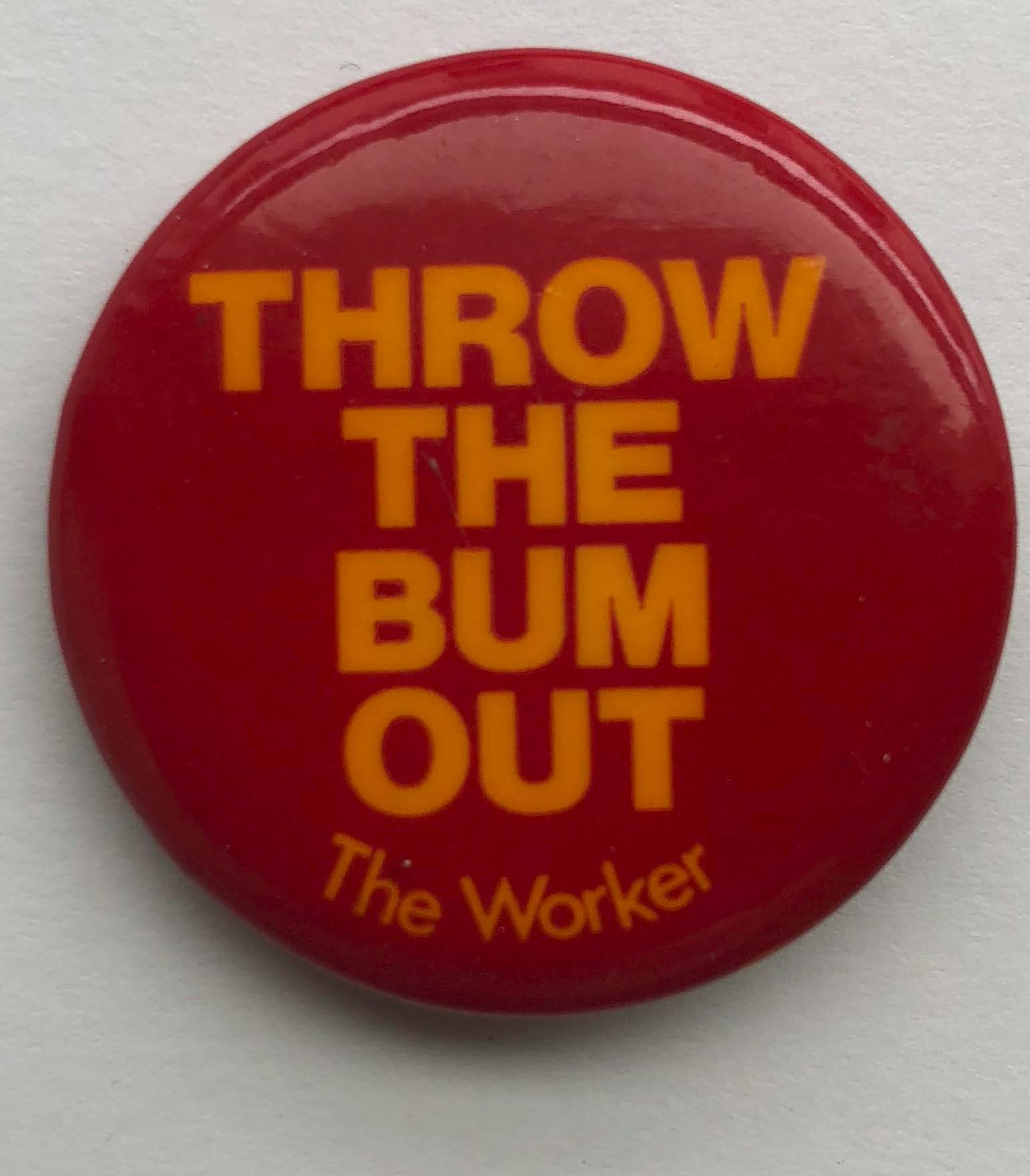
Panther shootout – whose game was it? by Robert Avakian
Oil! Avakian Bust
Militants Display Red Aims by Ed Montgomery
Internationals lay oil slick on Chevron strike by Bob Avakian [The Movement, May 16, 1969]
Radicals Convene. Views Differ In SDS National by Karen Davidson
Union of Revolutionary Women by Mary Lou Greenberg
In Search Of The ’Real S.D.S.’ Favoring A Campus Worker-Student Alliance by Doug Hogan
A Letter In Reply by members of RU
WSA And PLP Repudiate Revisionism by Ivo Banac
Student Retires After Week’s Stint As FBI Informer On RU Activities by “Ron Goldstein”
Revolutionary Union Splits Over Differences In Ideology, Tactics by Bill Evers
Internal Security Investigation: Venceremos Cited In House Report by Glenn Garvin
Bob Avakian Before RU
Progressive Labor Critique of Scheer Race
’Schmeer’ Cop Report Refused By Council
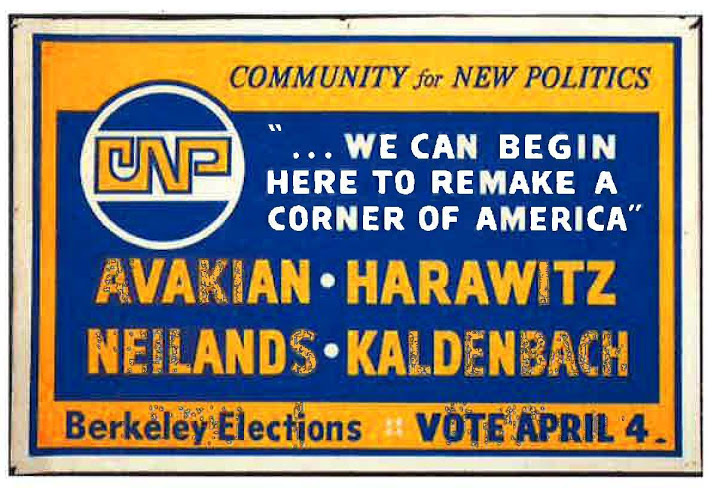
Nary A No Among Our City’s Heads
CNP To Boost Student Power
CNP: Up from Liberalism by Bob Avakian
Socialist Election Campaign in Berkeley by Brian Shannon [Young Socialist, February-March 1967]
Berkeley Barb Editorial: To Vote Right, Tip Left
Right Wins Listless Battle
Lauds Gunrunning as Valid Alliance
Berkeleyans on Way to NCNP Convention
FSM Funds May Help Black Rebel Groups
Mea Culpa Mea Culpa
New Politics: Meanwhile, Back at the Boondocks... by Lee Felsenten
Factions Forming in New Peace Party?
Panthers & Radicals
To the Bastille
PFM’s Second Wind
Stokely Here Soon
Caucus Calculations on Cleaver and Rubin
Critiques and Polemics
Letter to RU Executive Committee by the Los Angeles RYM II
1969 Richmond Oil Strike–An Analysis [from Progressive Labor magazine]
How the Revolutionary Union Renders Lenin More Profound While Aiding the CPUSA [from the Communist League’s Proletariat]
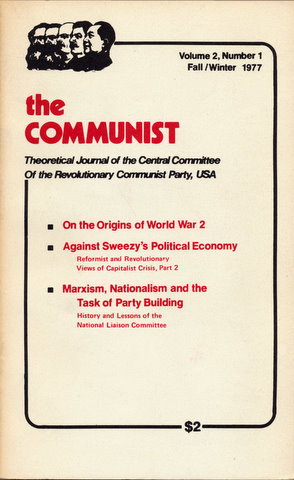
The United Front against Imperialism? by the Sojourner Truth Organization
A Critique of the United Front against Imperialism as a Strategy for Revolution within the U.S. by the Commentator Collective
The national question in the U.S. today [review of Red Papers 5] by Carl Davidson
Debate on the national question [reply to Davidson’s review of Red Papers 5] by the Revolutionary Union
SF Newsreel Expels Racist Leadership [Venceremos, Vol. III, No.6, May 25-June 7, 1973]
The Revolutionary Union by Workers Vanguard
SLA Action: Some People Jump Under The Bed by the Revolutionary Union
Which Side Are You On? [on RU and the SLA] by Carl Davidson
International Women’s Day Sparks Two Line Struggle by the Revolutionary Union
Which Side Are You On? [on RU and women’s emancipation] by Carl Davidson
Vicious RU Attack on Union Militants: Maoists in a Muddle Workers Vanguard, June 21, 1974
The Reactionary Line of the “Communist League” by the RU
The October League (M-L): A Cover for Revisionism by the RU
Revolutionary Union: Opportunism in a “Super-Revolutionary” Disguise by the October League (M-L)
Marxism or American Pragmatism? The Right Opportunist Line of the R.U. by Workers Viewpoint Organization
RU’s Errors: “Leftism”
Some Notes on the Revolutionary Union by Gordon Fox [Young Socialist Discussion Bulletin, Vol. 18, No. 8, December 1974]
The Struggle Within: A Critique of the Role of the Revolutionary Union within the USCPFA by the U.S.-China Peoples Friendship Association of Detroit
Red Papers 7: Revolutionary Union’s “United Front” with NATO by Young Spartacus
Critique of Red Papers 7: Metaphysics Cannot Defeat Revisionism by Martin Nicolaus
PRIMARY DOCUMENTS
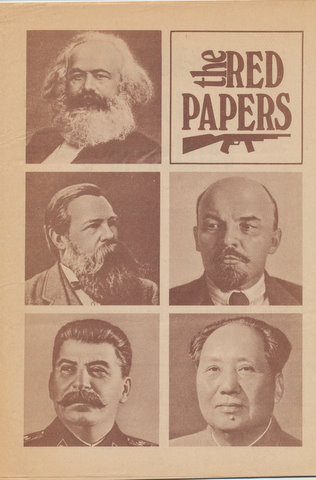
Red Papers
Red Papers 1
Red Papers 2
Red Papers 3: Women Fight for Liberation
Red Papers 4: Proletarian Revolution vs. Revolutionary Adventurism: Major documents from an ideological struggle in the Revolutionary Union
Red Papers 5: National Liberation and Proletarian Revolution in the U.S.
Red Papers 6: Build the Leadership of the Proletariat and Its Party
Red Papers 7: How Capitalism has been Restored in the Soviet Union and What This Means for the World Struggle
Other Primary Documents (internal)
Report from the National Secretariat
No Support for McGovern! Rely on the Masses! [missing pages 10-12]
Report to the Secretariat on Black Cadre Meeting by Don H. Wright
Develop Our Work Among the Black Masses and the Black Liberation Struggle! (Report coming off meeting of Black cadre...)
National Bulletin: “Throw the Bum Out, Organize to Fight”
Fight the Energy Freeze Bulletin
Local Bulletin – Our Work Against the Energy Freeze (San Francisco)
Other Primary Documents (Public)
Monsters of All Kinds Can Be Destroyed [1971]
The “New Economic Policy” [published by the Bay area Radical Education Project]
The “New Economic Policy” [issued by the East Coast RU]
They’re In For Us, We’re Out for Them
China’s Foreign Policy: A Leninist Policy
Bay Area Organizations’ Letter to the Communist League [People’s Tribune, Vol. 4, No. 8, September 1972]
Unite the People, Defeat Our Enemies. Statement by the Revolutionary Union on the Shooting of George Wallace
Victory Through Our Struggle, Not Through the Elections! [on the 1972 elections]
Report from the National Secretariat [on the creation of the National Secretariat]
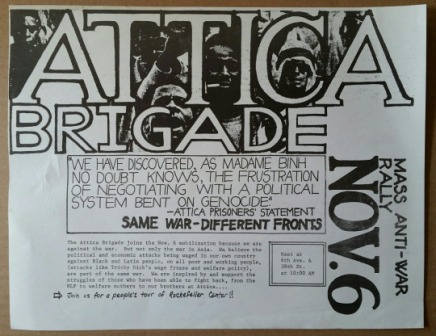
Classes and Class Struggle
Proletarian Dictatorship Vs Bourgeois “Democracy”
How Socialism Wipes Out Exploitation
The Party–Invincible Proletarian Vanguard
CIO Drives Point Up Need for Independent Role
CPUSA in the 1940s: The Browder Line in Practice
Union Drive in the Southwest: Chicanos Strike at Farah
On Building the Party of the U.S. Working Class and the Struggle Against Dogmatism and Reformism: Speeches by Bob Avakian
Multinational communist party needed to lead our struggles On the Move, Vol. 1, No. 3, November 1974
Boston busing used to divide working class On the Move, Vol. 1, No. 3, November 1974
Busing march misses target On the Move, Vol. 1, No. 5, January-February 1975
Boston Busing: fight divide and rule schemes On the Move, Vol. 1, No. 5, January-February 1975
Work Among Students and Youth
Build the Anti-Imperialist Student Movement
Capitalism in Crisis – Fight for a Decent Education!
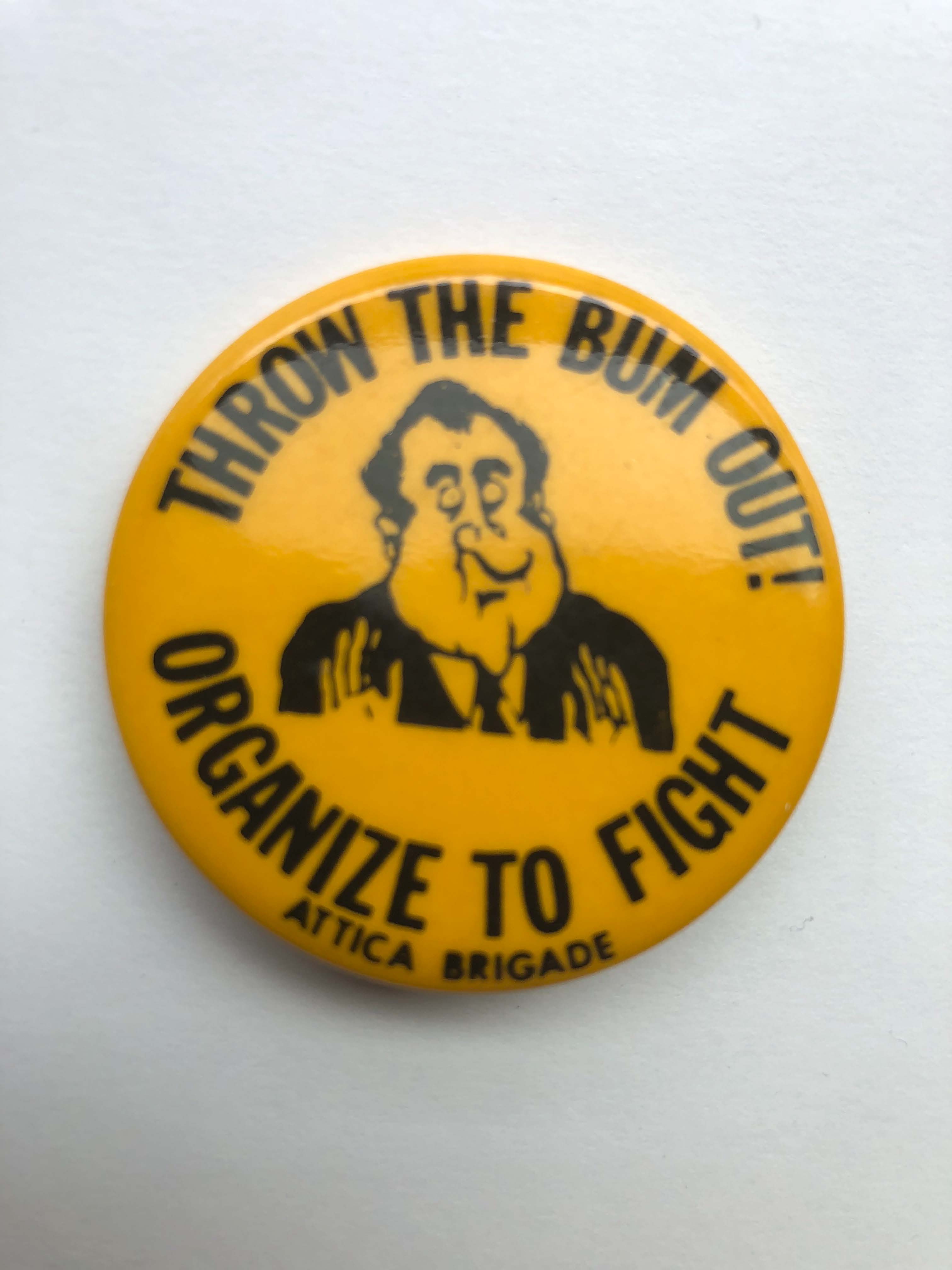
Attica Brigade
Attica Brigade
Call to join an anti-imperialist contingent at the march on Washington, D.C. to oppose the Vietnam War, May 21, 1972 [flyer]
200 Attend Regional Meeting of Attica Brigade on Campus
Attica Brigade emerges as regional group, Washington Area Spark, Vol. 2, No. 9, April 13-May 11, 1973
The Time is Now.... [call to a National Convention]
The Time is Now.... [letter to Guardian subscribers about the upcoming National Convention]
Editorial: The Road Ahead
Revolutionary Student Brigade
Revolutionary Student Brigade
’Revolutionary Student Brigade’ formed in Iowa by Ben Bedell
Opinion: Revolutionary Students by Members of the Revolutionary Student Brigade
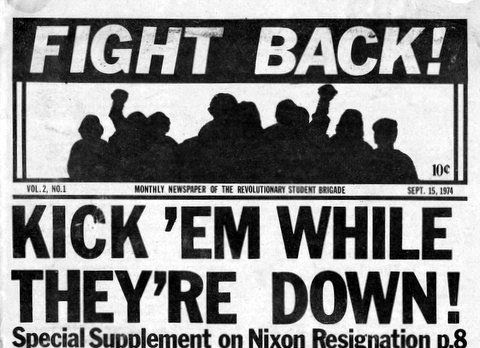
Surreally Political by Arn Passman, [Berkeley Barb, August 16-22, 1974]
National Convention Launches RSB
The Bums Are On the Run – Kick ’Em While They’re Down!
“Revolutionary” Student Brigade Holds Conference: Maoists Exhume New Left by Young Spartacus
R.S.B. Internal Newsletter, No. 1
R.S.B. Internal Newsletter, No. 2
Revolutionary Student Brigade Tour Through the Southwest
Seize the Times! Internal Newsletter of the Revolutionary Student Brigade, #10, February 25, 1975]
Victory to the Indochinese!
Revolutionary Student Brigade – Leaflets and Flyers
Come to an Open Meeting of the Revolutionary Student Brigade
A Forum – The Soviet Union: As Capitalist as the U.S.
UW Drop the Holdings! RSB Challenges UW to a Debate!
Demonstrate Against the Aggressor Zionist State and its Criminal Agent Moshe Dyan!
Mao Tsetung – Great Leader of the Working Class
Invitiation to RSB Western Regional Conference
RSB Western Regional Conference Brochure
Victory to the People of Southern Africa!
The Revolutionary Student Brigade at the University of Michigan-Ann Arbor – Leaflets and Flyers
Vitory Through Our Struggle, Not Through Elections
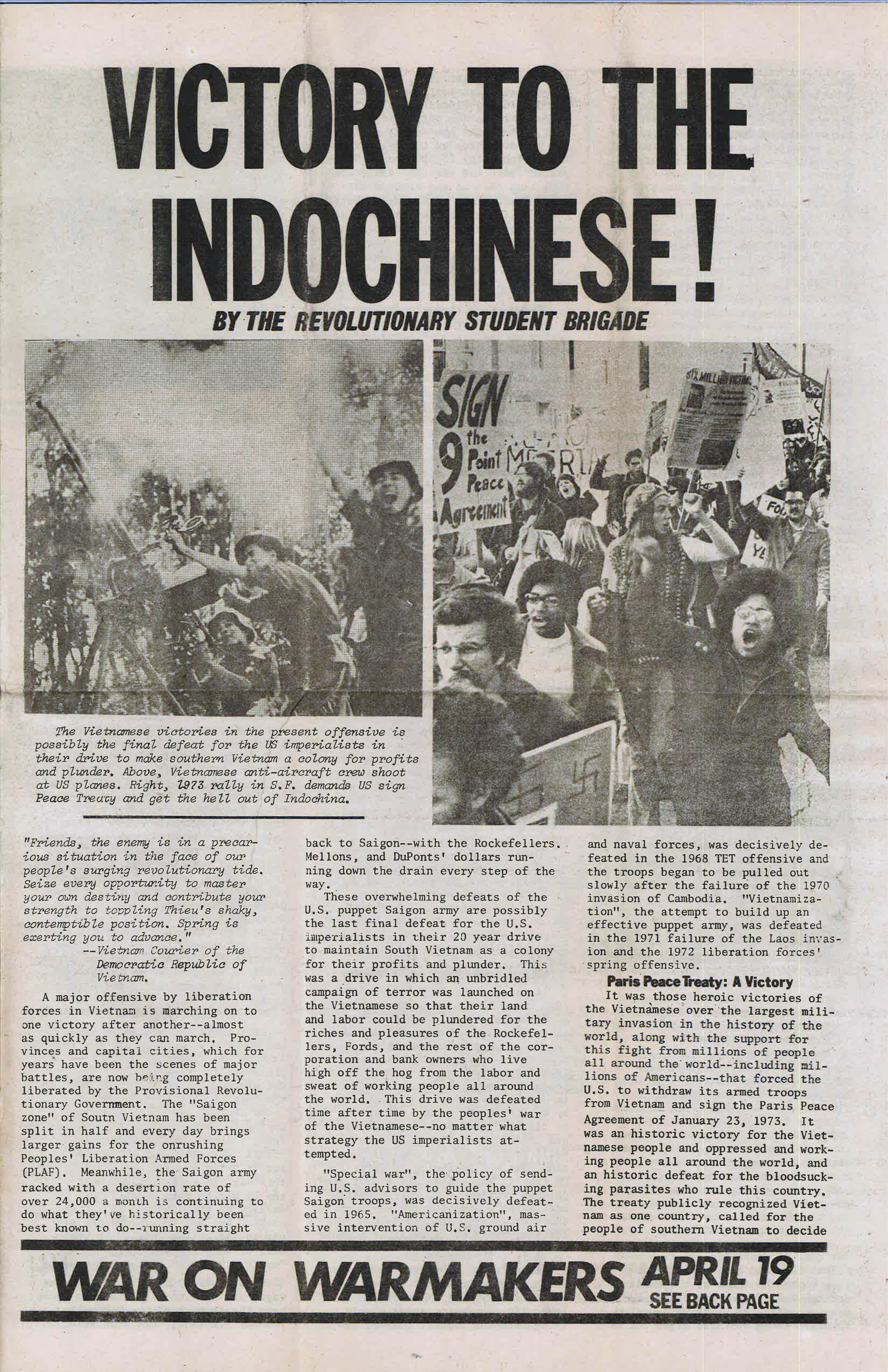
What Can We Do?
Orientation Program Revolutionary Student Brigade
Victory Through Our Struggle, Not Through Elections
Pick Your Poison...
Support the Struggle of the African People
Demonstrate Election Day November 2
March on Nov. 2nd! Politicians Fight for $ Interests. We Must Fight for Our Own!
A Chou En-Lai Memorial
CIA Returns...
Support the Strike!
Help Win the Strike!
US and USSR Grab for Angola
Periodicals
Revolution [newspaper], Vol. 1, No. 1, February 1973
On The Move
Fight Back!
[Back to top]
The October League (Marxist-Leninist)
The October League (Marxist-Leninist) originated directly out of the three-way debate that ended Students for a Democratic Society (SDS) in 1969. The SDS faction RYM II opposed Progressive Labor and the Weatherman faction with a pro-worker organizing approach (unlike Weatherman) while supporting the Black Panther Party and other left-wing nationalist movements in communities of color (unlike PL). From the start, RYM II took a strong pro-China position, which had been PL’s hallmark until the latter group broke its ties to China in 1970. After the SDS break-up, RYM II became a national organization, Revolutionary Youth Movement (RYM), but it soon disintegrated.
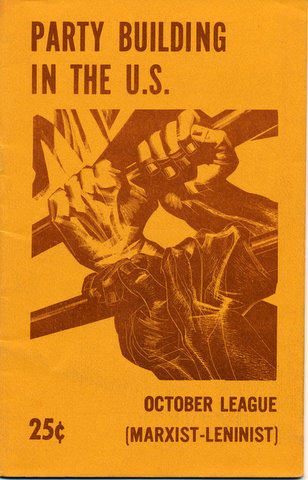
The Georgia Communist League (ML) (GCL) and the October League (Marxist-Leninist) (OL) developed out of the Atlanta and Los Angeles RYM collectives respectively. The Atlanta SDS-RYM collective had significant roots in a pro-RYM faction that had developed in SDS’s sister organization in the South, the Southern Student Organizing Committee, whose leader was Lyn Wells.
The OL and the GCL merged in 1971, and the national October League (ML) became the second largest group in the New Communist Movement, after the Revolutionary Union. The direction and strength of OL was shaped in part by their competition with RU over recruits and positioning in the broader left and progressive movements.
At first OL set a more orthodox course than RU – stressing party-building and opposing reforms like the feminist movement’s Equal Rights Amendment (ERA). Their literature bristled with hammers and sickles. They also hewed more literally to the CPUSA’s Stalin-era “Afro-American nation in the Black Belt” theory, which held that self-determination in the historic plantation area of the Deep South remained at the heart of African American people’s struggle for liberation.
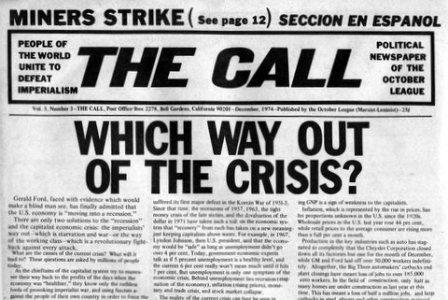
In this period, OL saw ’ultra-leftism’ as the main danger in the party building process, which reflected its own efforts to tone down some of the rather alienating jargon and over-the-top symbolism that had been part of the culture of its founding collectives. OL soon found itself in a strategic position in a local wildcat strike at Mead Packaging in Atlanta. From that experience they toured the country arguing that an openly Marxist-Leninist group could offer leadership to militant workers.
By 1973, OL took on a more moderate persona, emphasizing accessibility to other left groups and a greater openness to popular reforms; for example, it reversed itself on ERA as the RU turned to a more hardcore ‘workerist’ position. OL absorbed several local collectives and fielded cadres into industrial jobs. In Detroit, it gained influence in the UAW Brotherhood Caucus. Within the burgeoning New Communist Movement, in this period, OL attempted to mark off a political space that combined loyalty to China with a stance reminiscent of the Comintern’s early Popular Front period.
Historical Works
Building Revolution in the South: The Southern Conference Educational Fund and the New Communist Movement, 1968-1981 by Doug Michel
Strike Fever: Labor Unrest, Civil Rights and the Left in Atlanta 1972 by Monica Waugh-Benton
Same, Same But Different: An Atlanta Case Study in Movement Building by Daniel Horowitz Garcia
Primary Background Documents
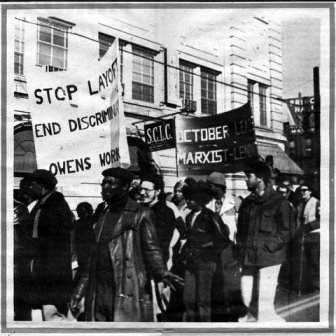
The family: obsolete or revolutionary? by Michael Klonsky
Old ’Self-Determination’ Program Resurrected: What Was the CP’s ’Black Belt’ Theory? by Doug Jenness
Communists meet to discuss labor by Rod Such
The Relationship Between the Struggle for Democracy and the Struggle for Socialism by Barry Litt
Critiques and Polemics
The October League. New Left Maoism: Long March to Peaceful Coexistence by the Spartacist League
Iranian Communist Hits OL
The Struggle of Small and Medium-sized Nations by the October League
CL Replies to Attack by the Communist League
October League: Slinking Back to the Anti-Monopoly Coalition Workers Vanguard, February 1, 1974
The October League (M-L): A Cover for Revisionism by the Revolutionary Union
Primary Documents
Georgia Communist League (Marxist-Leninist)
An Introduction to the Red Worker
Attica: Tragic or Heroic
PL Launches Cowardly Attack [Nixon in China]
Georgia Communist League Statement on the Bombing of the Great Speckled Bird [Great Speckled Bird, May 15, 1972]
New Coalition [Great Speckled Bird, May 22, 1972]
California and Georgia Communists Merge
One Woman’s 60-Year Fight: Interview with Nanny Washburn
Periodical
The Red Worker
October League (Marxist-Leninist)
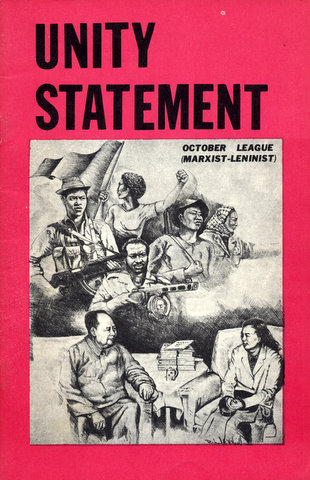
Statement of Political Unity of the October League (ML)
Women Hold Up Half the Sky
The Mead Strike
Mead Workers Caucus Recognized [Great Speckled Bird, September 18, 1972]
Atlanta wildcat strike ends
October League and Mead [Great Speckled Bird, October 16, 1972]
“Communist Inspired Strike?” October League press release
Interview: Mead Strike Leader
“Wildcat at Mead“ – A short film by the October League (Marxist-Leninist) (1972)
* * *
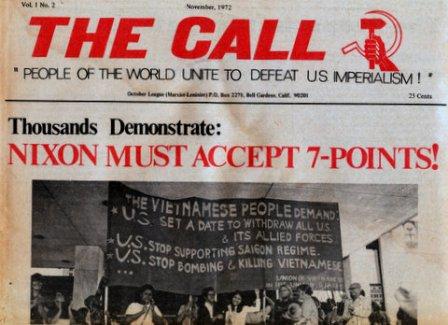
UNITY: Rising Trend in the Communist Movement – Puerto Rican Revolutionary Workers Organization
October League’s Salute to the Guardian on its 25th Anniversary [November 1972]
Editorial: Lesson of Elections Build the Mass Movement
Revisionists launch new attacks
What is the October League?
Communists Call Labor Conference
Communist Work in the Factories: A Report on the Atlanta Conference [The Call Special Supplement]
Plant organizers meet in Atlanta [from the Guardian]
Building a New Communist Party in the U.S.
October League Expands Work
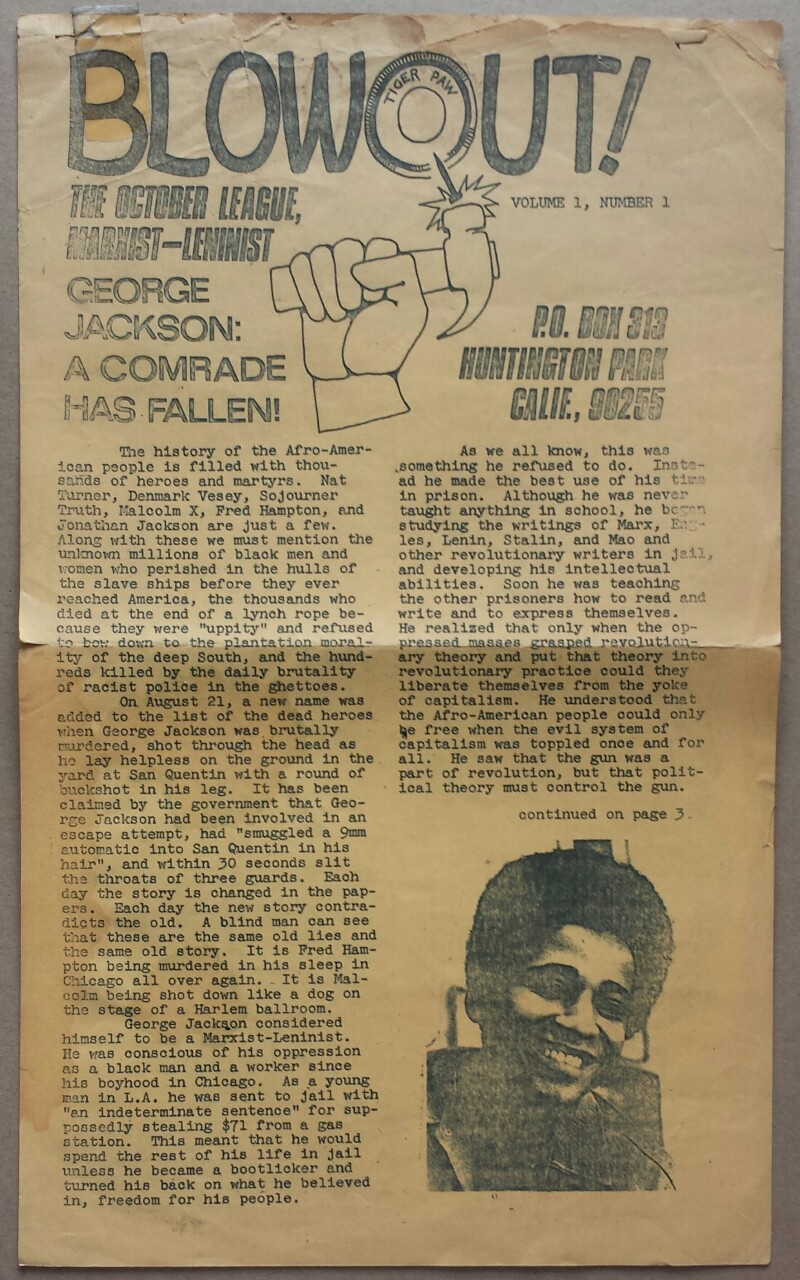
The Call Grows Louder
Watergate and the Fascist Threat
Role of Women’s Movement Debated at Guardian Forum
The October League’s Second Congress
Unified and Strong: October League Holds 2nd Congress
For Working Class Unity and Black Liberation
* * *
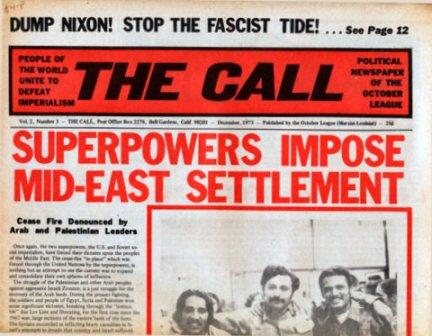
Editorial: Sectarian Attack at Guardian Forum
Healey Split Exposes Revisionist CPUSA
Call Seller Busted [Great Speckled Bird, September 3, 1973]
Editorial: Dump Nixon! Stop the Fascist Tide!
Sham Congress Called by Communist League
Bay Area Forum Hits “Social Imperialism, Revisionism”
OL Holds Second Labor Conference
Communists and the Present Crisis [Special Call Supplement on OL’s second labor conference]
Why we Say “Dump Nixon”
Congress Paralyzed – Dump Nixon
Communist Unity: Three Groups Join Forces
Who Are the Real Terrorists? [on the Symbionese Liberation Army]
A United Front in the U.S.?
The Future is Bright: A Response to the Communist League
CPUSA tries to Glorify Imperialism
October League Holds Afro-American Conference
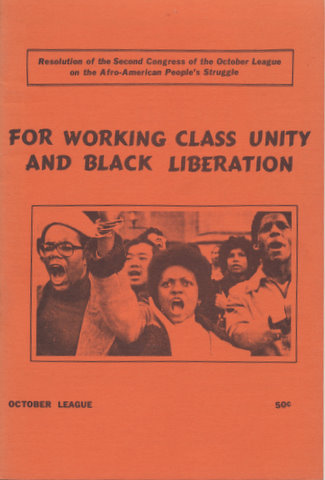
October League Holds Southern Labor Conference
Call Editorial: Nixon Dumped But Real Fight Ahead
Report from Labor Conference workshop: Organizing the Unorganized
Lessons Drawn from Building U.A.W. Caucus
Revisionist outlook on the trade unions by Susan Klonsky
Building a Revolutionary Student Movement, Part 1–SNCC and the Early Period
Building a Revolutionary Student Movement, Part 2–Students Against Imperialism
The Call Begins Third Year
Communists Reach Unity: October League Merges with ROAAW
Stop Boston Racist Attacks, Defend Right of Self-Determination by the October League (Marxist-Leninist)
March against Racism: Join Fred Hampton Contingent
Revolutionary Union: Opportunism in a “Super-Revolutionary” Disguise
Which Way Out of the Crisis?
Periodical
The Call
[Back to top]
Black Workers Congress

The Black Workers Congress (BWC) began as an attempt by some of the leaders of the Detroit-area League of Revolutionary Black Workers (LRBW) to expand their efforts nationwide and connect with broader networks of working class-focused black activists. Present at its founding in December 1970 were, in addition to the LRBW, representatives from the United Black Brothers in Newark, union caucuses in Baltimore, Milwaukee, Chicago, Cleveland and Gary, Indiana, and former members of SNCC and the Black Panther Party.
The birth of the BWC marked the end of the LRBW, with one leadership group seeking to build the BWC as a separate formation, and the other deciding to merge with the Communist League, a multiracial group based in Los Angeles. [For more on the LRBW, see “The League of Revolutionary Black Workers”] The BWC, which began as an effort to build a new black community-centered working class revolutionary group, became a predominantly, but not exclusively, black contingent of the Mao-oriented New Communist Movement.

Like the LRBW, the BWC initially sought to bring revolutionary nationalist leadership to industrial workplace settings, in contrast to the Black Panther Party, which focused on youth and the poor in inner-city neighborhoods. But in the 1970’s, the influence of nationalism among the most militant black activists waned, replaced by a more focused interest in Marxist theory. The BWC moved from an eclectic grounding in thinkers such as Malcolm X, C.L.R. James, James Boggs, James Forman and Franz Fanon as well as the Marxist classics, to a rigid identification with orthodox Marxism-Leninism.
By 1973, the BWC plunged into party-building discussions with other NCM groups. It briefly joined the National Liaison Committee (NLC), which included the Puerto Rican Revolutionary Workers Organization (formerly the Young Lords Party), I Wor Kuen (a predominantly Chinese-American group in San Francisco and New York), and the mostly-white Revolutionary Union. Then, in 1974, it briefly joined the National Continuations Committee (NCC), a party-building initiative launched by the Communist League. The BWC's involvement in the NLC and NCC are documented in a later section of EROL – The New Communist Movement: Initial Party-Building Campaigns, 1973-1974)
Unable to maintain organizational stability, the BWC underwent repeated internal struggles. A major two-line struggle began to roil the organization in late 1974, leading to a four-way split in 1975. This last two-line struggle and the split in the BWC are documented in a later section of EROL – The New Communist Movement: Party-Building Efforts Continue, 1975-1977).
Historical Works
BWC leader looks at past, sees new stage of struggle
History of the Modern Black Liberation Movement and the Black Workers Congress Summed-Up
Primary Background Material
Speech Delivered by James Forman to the Black Caucus of the National Conference on New Politics (NCNP) Convention, September 2, 1967
Liberation Will Come from a Black Thing by James Forman

Polemical Exchanges
Criticism of the Revolutionary Union’s “National Bulletin #13” and the Right Line in the RU, by the Black Workers Congress
Marxism Vs. Bundism, by the Revolutionary Union
Revolutionary Nationalism and African Americans by the Black Workers Congress
Revolutionary Union Reply to the Black Workers Congress
The Black Liberation Struggle, the Black Workers Congress, and Proletarian Revolution by the Black Workers Congress
BWC Pamphlet: Taking the Wrong Path, by the Revolutionary Union
In Response to RU “Criticism”, by the Black Workers Congress [The Communist, Vol. 1, No. 1, August 15, 1974]
Other Primary Documents – National
DRAFT PROPOSAL: Manifesto of the International Black Workers Congress
Manifesto of the Black Workers Congress
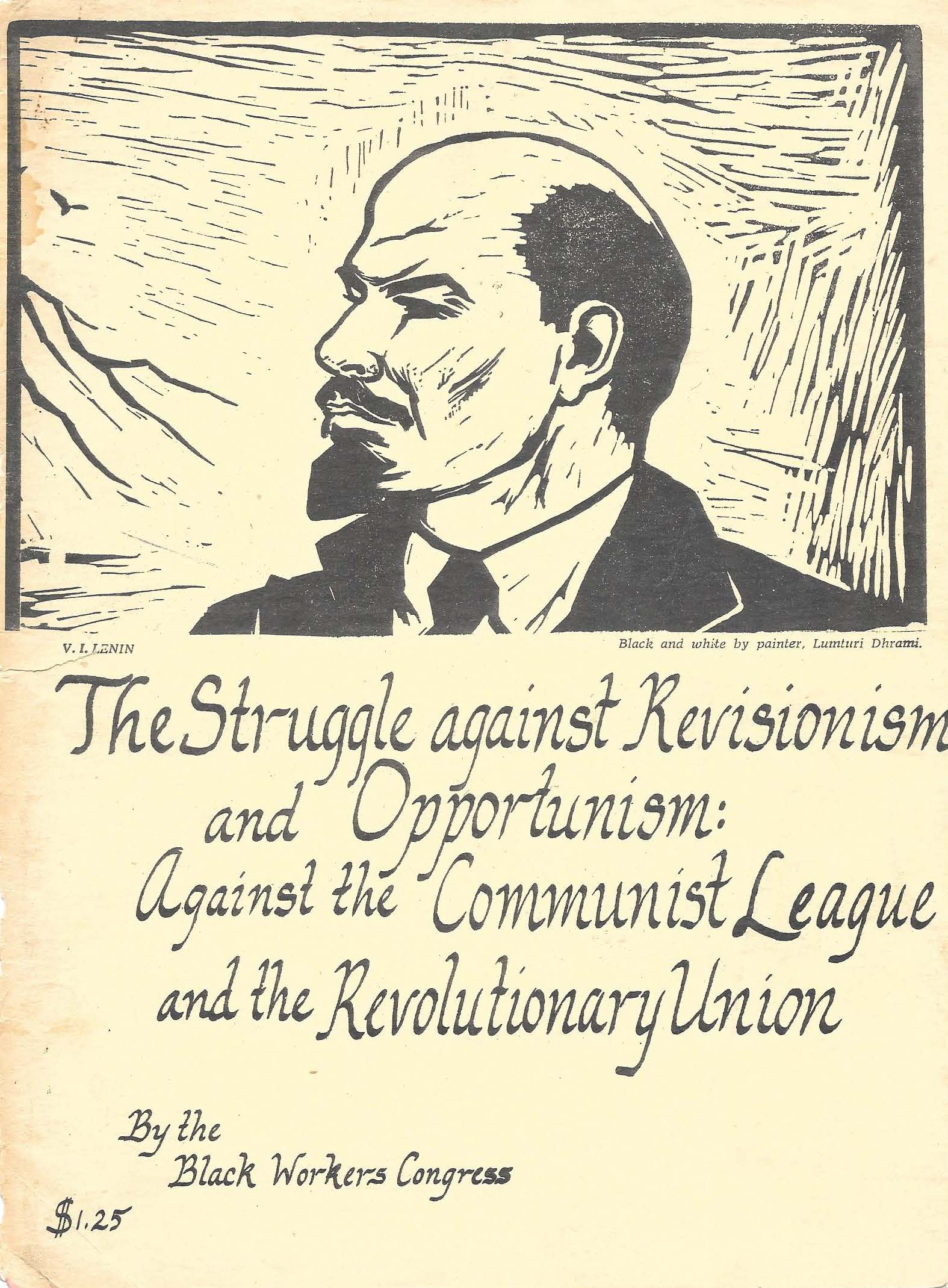
CONTROL, CONFLICT AND CHANGE: The Underlying Concepts of the Black Manifesto by James Forman
300 Attend National Conference
Class Struggle and the Black Liberation Struggle: Who Will Lead?
Letter to the Interim Committee from the Western New York District Committee on the Black Women's United Front
Black America: Organize and Struggle by James Forman
Document on Security
Struggle in the RU: In Opposition to the Consolidation of the Revisionist Line on the Black National Question by ex-members of the RU and comrades of the Black Workers Congress
The Struggle Against Revisionism and Opportunism: Against the Communist League and the Revolutionary Union
Introductory Outline for a Discussion Towards Developing an Organizational Strategy on Party Building
The Political and Economic Situation in the United States
The BWC Central Organ and the Development of a Network for Distribution and Correspondence
Proletarian Revolution and National Liberation
Black Workers Say No to Chrome from Rhodesia [flyer][1974?]
Progress Report: Black Women's United Front Conference, January 1975
Campaign to Stop the Importation of South African Coal
Other Primary Documents – San Francisco Bay Area District
On BWC strategy in this area
Plan for Recruitment
Materials on the Organizational Plan for the District
District document on security
Implementation of Security
Carrying Out District Propaganda Work
Initial Discussion on How to Use The Communist
Report on August 29th Movement Forum
District Report on Telephone Trade Union Work
Report to the National Secretariat on District work [EROL Note: document date should be 1974, not 1975]
Summation of the Process of Integration into the BWC
Periodicals
Point of Production, Vol. 1, No. 2 [August, n.d. 1970?] [Official Organ of the Black Workers Congress for the Gary, East Chicago and Chicago area]
Point of Production, Vol. 1, No. 2 [October 1971] [Official Organ of the Black Workers Congress for Los Angeles and the Bay Area]
Point of Production, No. 2 [July 1972] [Official Organ of the Black Workers Congress]
Siege
The Communist
* * *
See also:
James Forman Internet Archive
[Back to top]
The Puerto Rican Revolutionary Workers Organization
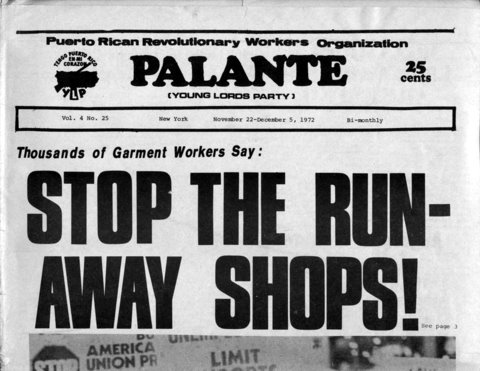
The Puerto Rican Revolutionary Workers Organization (PRRWO) was the name adopted by the former Young Lords Party (YLP), a mass revolutionary party of Puerto Ricans in the United States, in 1972. Inspired by the Black Panther Party and a Chicago Puerto Rican group called the Young Lords Organization, led by Cha-Cha Jimenez, the Young Lords Party was founded by a group of mostly Puerto Rican students from SUNY-Old Westbury, Queens College and Columbia University in 1969. Through community-based revolutionary organizing and popular mass actions, the YLP quickly became a significant force in New York’s Puerto Rican community and among city revolutionary activists as a whole.
The YLP promoted a “divided nation” theory about Puerto Ricans, seeing the Puerto Rican nation as having two concentrations (the island itself and the major Puerto Rican communities in U.S. urban areas) and Puerto Ricans within the U.S. as an integral and important part of the oppressed colonial nation and its independence struggle. The YLP also recognized the multi-racial character of Puerto Rican nationality and thought of itself as a multi-racial organization, building ties to U.S. black liberation movements and opposing racism in the Puerto Rican community.
In the early 1970s, as the mass movements characteristic of the 1960s began to ebb within the U.S., the YLP attempted to address the new conjuncture, first, by trying to implant a branch of their organization in Puerto Rico itself and second, by attempting to adopt more explicitly communist politics and organization. This shift was publicly initiated at their 1972 Congress at which the YLP became the Puerto Rican Revolutionary Workers Organization, an explicitly Marxist-Leninist group. At this Congress, PRRWO committed itself to the long-term goal of building a new communist party and agreed to form a National Liaison Committee (NLC) together with the Revolutionary Union, Black Workers Congress and I Wor Kuen toward that end. (PRRWO’s involvement in the NLC and other Party building campaigns in the mid-1970s are covered in a later section of EROL – The New Communist Movement: Initial Party-Building Campaigns, 1973-1974).

PRRWO’s changes in politics and organization were an attempt to solve problems that were, in fact, caused by the collapse of the mass movement of the 60s. They were accompanied by a growing belief by some within the PRRWO leadership that the problem within their organization was the result of deviations from communist orthodoxy. Their quest for a purer and more orthodox Marxism-Leninism led them back in time (past Maoism) toward an early communist ideology (which was progressively codified during the 1920s and 1930s by the Comintern as a militantly closed orthodoxy). In line with this process, a newly emerging PRRWO leadership embraced the view that repeated purges would strengthen the organization’s correctness and therefore guarantee its future success.
In reality, the organization (and its allied groups within the Revolutionary Wing configuration) became increasingly absorbed in bitter internal fighting over ideological matters that rapidly ate away their remaining membership, influence and political impact (these later developments will be covered in subsequent sections of EROL).
Historical Works
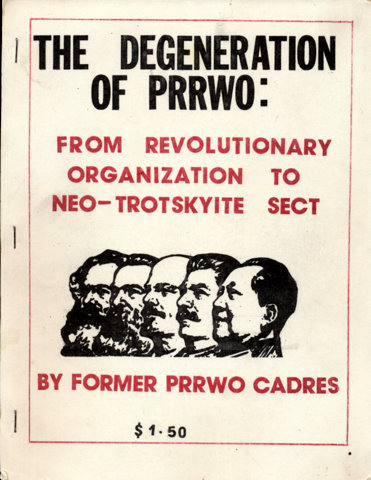
The Puerto Rican Revolutionary Workers Organization. A Staff Study
From Gang-bangers to Urban Revolutionaries: The Young Lords of Chicago by Judson Jeffries
Palante! A Brief History of the Young Lords
Latin Liberation News Service: The Newspapers of the Young Lords Organization by Michael Gonzales
Puerto Rico en mi corazon: The Young Lords, Black Power and Puerto Rican Nationalism in the U.S., 1966-1972 by Jeffrey O.G. Ogbar
The Health Initiatives of the Young Lords Party by Theresa Horvath
History of the Development of the Puerto Rican Revolutionary Workers Organization
The Degeneration of PRRWO: From Revolutionary Organization to Neo-Trotskyite Sect by Former PRRWO Cadres
Lessons from the Degeneration of the Puerto Rican Revolutionary Workers Organization by I Wor Kuen
Palante! Siempre Palante!, Interview with Richie Perez
A Young Lord Remembers by Richie Perez
Pa’lante: The Direct Action Campaigns of the Young Lords Party by Andrew Winston Falion
The Young Lords Party: examining its deficit of democracy and decline
Primary Background Materials
Young Lords Organization
12 Point Program of the Young Lords Organization
“Que Viva El Pueblo” A Biographical History of Jose Cha Cha Jimenez, General Secretary of the Young Lords Organization
Young Lords Organization/Cha-Cha Jimenz Defense Committee flyer
Young Lords Party
The Young Lords: A Reader Edited by Darrel Enck-Wanzer
13 Point Program and Platform of the Young Lords Party
Ideology of the Young Lords Party
Faction Leaves Young Lords Party
Progress on Split [Palante, June 24, 1972]
Angela Davis: People's Victory [Palante, June 24, 1972]
Polemics
What Road for the Puerto Rican Movement? by the Puerto Rican Revolutionary Workers Organization
What Road for the Puerto Rican Movement? – PSP Replies by the Puerto Rican Socialist Party
Primary Documents
Palante Editorial: 1st Party Congress by the Central Committee, Young Lords Party
Resolutions and Speeches. 1st Congress. Puerto Rican Revolutionary Workers Organization (Young Lords Party)
YLP Congress transforms party into workers group by Stephen Torgoff
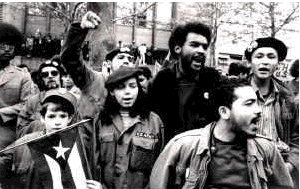
Palante Editorial by the Central Committee, Puerto Rican Revolutionary Workers Organization
Palante Editorial, Part 2 by the Central Committee, Puerto Rican Revolutionary Workers Organization [Palante, August 4, 1972]
UNITY: Rising Trend in the Communist Movement – Puerto Rican Revolutionary Workers Organization by the October League (M-L)
HRUM – The Error of Dual Unionism By Pat Rodriguez [Palante, October 25, 1972]
HRUM sums up hospital organizing by Stephen Torgoff
The Pepsi Generation.... Reaches Russia By Juan Gonzalez [Palante, December 6, 1972]
Editorial: Does There Exist a Divided Nation? By Gloria Fontanez [Palante, December 20, 1972]
Editorial: PRRWO Responds to El Comité [Palante, March 15, 1973]
Editorial [on changes to Palante] [Palante, August 26, 1973]
National Liberation of Puerto Rico and the Responsibilities of the U.S. Proletariat
In The U.S. Pregnant With Revisionism: The Struggle for Proletarian Revolution Moves Ahead. The Political Positions of the Puerto Rican Revolutionary Workers Organization
Proletarian Internationalism or Revisionism: Analysis of October 27 Rally in Support of Puerto Rican Liberation Struggle
Periodical
Palante
[Back to top]
Communist League
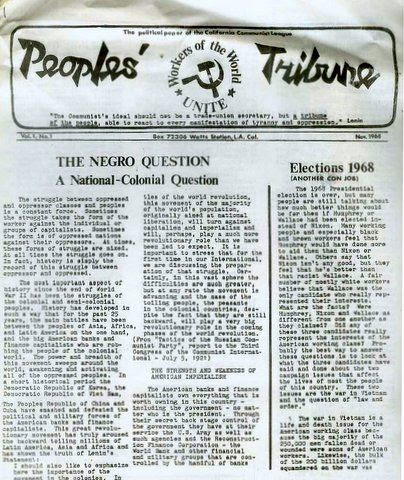
One of the largest new antirevisionist groups to surface in the late 1960s, the Communist League (CL) was distinct in a number of ways. It had direct roots in the Communist Party USA and the main “second wave” group, the Provisional Organizing Committee (POC). It disdained the New Left, student movement origins of the new communist movement groups. Unlike the Revolutionary Union and the October League, which also grew out of local collectives in California, CL came directly from an organizing effort in a black community.
Beginning as an expelled chapter of the POC, these Marxists (five) held a meeting in Watts California to establish the California Communist League in 1968. Watts was the site of the furious urban uprising of 1965. The California Communist League (CCL) drew into its orbit young radicals galvanized by the Chicano Moratorium and won them over to the idea of building a revolutionary party of the proletariat. The CCL emphasized studying and developing Marxist-Leninist theory (based on standard texts from the Stalin era), mastering the legacy of the Third Communist International, and the training of an organization of revolutionaries in Marxism as its purpose and the only basis for party building.
Like the POC, CCL had a membership and leadership core including all people of color, ethnicity and national origin and emphasized the importance of the national-colonial character of the oppression of African Americans and other people of color to the proletarian revolution. It adopted the slogan “Free the Negro Nation,” based on its own theoretical variation on the earlier CPUSA thesis that African Americans in the historic plantation area of the deep south, along with the whites living there, together constituted a nation within the multinational state of America, and the right of self-determination was applicable to this nation of black and white peoples.
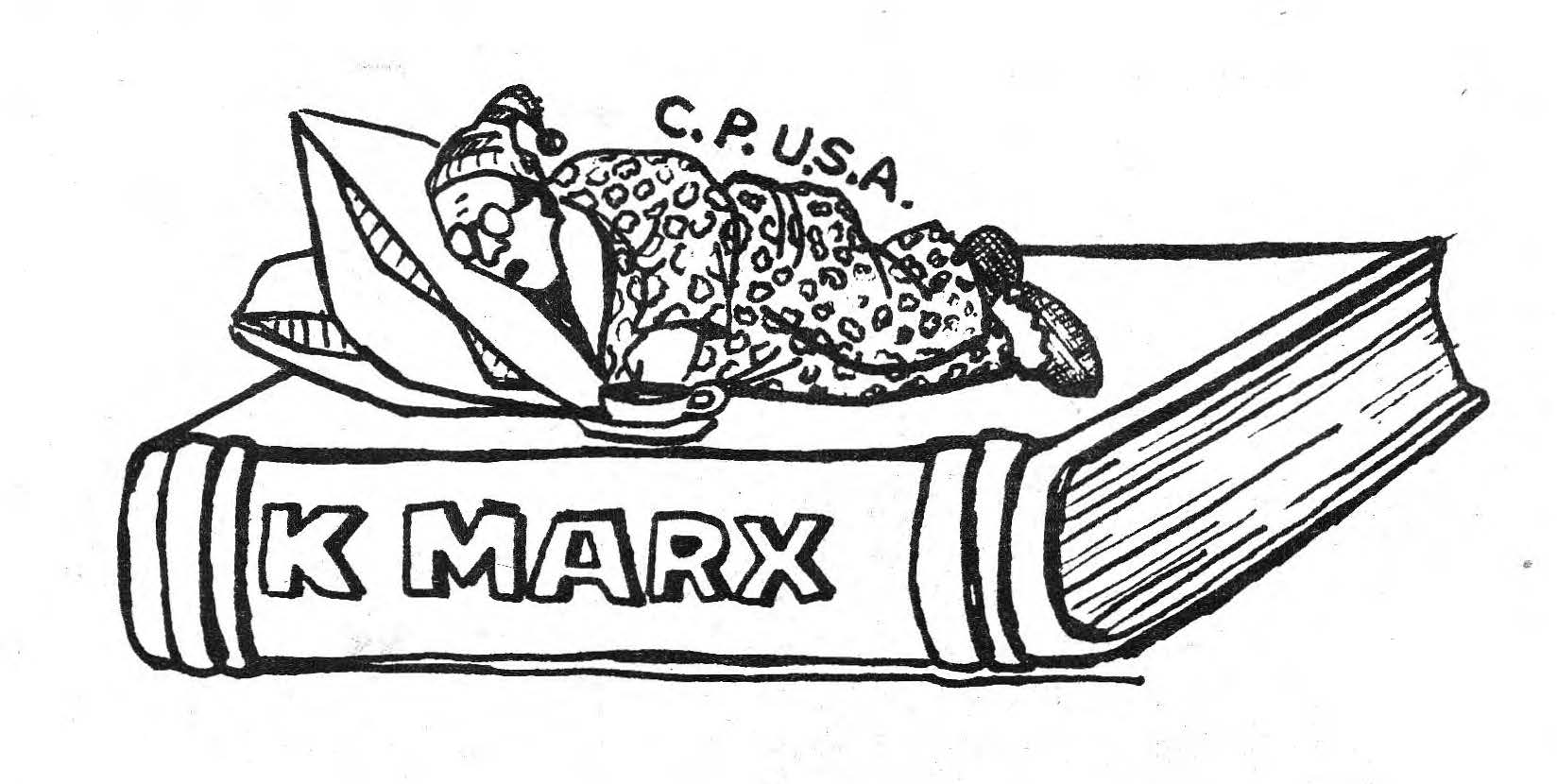
Beginning in 1968, it launched a newspaper, the People’s Tribune. The People’s Tribune was propaganda heavy, in conformity with what the Communist League viewed as its purpose and mission, the creation of an organization of revolutionaries based on Marxist theory rather than what CL called the spontaneous or mass movement, from which it drew recruits. As it expanded nationally in 1970, the group renamed itself the Communist League.
While expressing unconditional support for the Chinese revolution, and siding with the Marxist section of the CCP’s denunciation of Khrushchev revisionism, the CL, unlike the Revolutionary Union and the October League, held back from a full-blown embrace of Maoism. CL’s publishing efforts reprinted 1930’s Communist texts, including Textbook of Marxist Philosophy 1937, Problems of Leninism, Stalin’s speeches on the American Communist Party, R. Palme Dutt’s Fascism and Social Revolution, the History of the Communist Party of the Soviet Union (Bolshevik), and revived interest in the writings of Stalin, including Foundations of Leninism.
In 1973, the CL launched a major party building initiative called the National Continuations Committee (NCC) which culminated in 1974 in the formation of the Communist Labor Party (CLP). The NCC process and the formation of the CLP are documented in a later section of EROL – The New Communist Movement: Initial Party-Building Campaigns, 1973-1974.)
Historical Works
The Dialectics of the Development of the Communist League
For a Real Marxist-Leninist Communist Party! [on the history of the CL]
Historical Texts by Anti-Revisionist Veterans Associated with the Communist League
Message from Comrade Dougher – A Veteran Communist
45 Years of Communism: Letter from Comrade Kilpatrick
A Veteran Communist Speaks... On the Struggle Against Revisionism by Admiral Kilpatrick
A Veteran Communist Speaks by Joe Dougher
A Tribute to Bill Watkins by W. F. Santiago-Valles
Critiques and Polemics
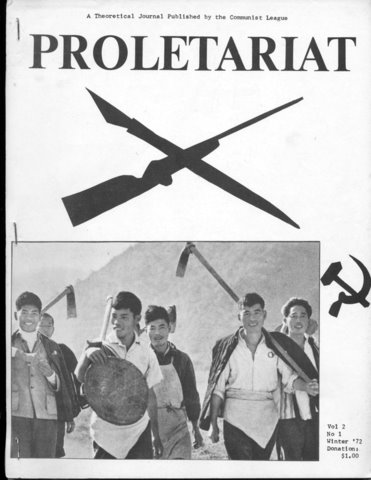
The Dictatorship of the Proletariat by the Young Communist League majority [from “From Maoism to Trotskyism,” Marxist Bulletin, No. 10]
Stalin by the Young Communist League minority [from “From Maoism to Trotskyism,” Marxist Bulletin, No. 10]
Letter from an Expelled Member of the CL (formerly the CCL) by Susan Y. [Proletariat, Vol. 1, No. 1]
The League’s ’Dogmatism’ and the ’Creative Marxism’ of Susan Y. A Reply to her Letter by J.A. [Proletariat, Vol. 1, No. 1]
“New Left” Attacks Communist League [People’s Tribune, Vol. 4, No. 8, September 1972]
Reply to Attack on CL, Part 1 [People’s Tribune,, Vol. 4, No. 8, September 1972]; Part 2 [People’s Tribune,, Vol. 4, No. 9, September 1972]
C.L. Reply to R.U. Threats [from People’s Tribune,, Vol. 4, No. 11, Dec. 1972-Jan. 1973]
On the Question of Peace. Part 3 of C.L. Response to R.U. Attack [from People’s Tribune,, Vol. 4, No. 11, Dec. 1972-Jan. 1973]
The Struggle of Small and Medium-sized Nations by the October League (Marxist-Leninist)
CL Replies to Attack, (Part 1), (Part 2) by the Communist League
How the Revolutionary Union Renders Lenin More Profound While Aiding the CPUSA
Reply to October League (ML): On the “Young Communist Movement”, (Part 1) , (Part 2) by the Communist League
Reply to October League (ML): Call for Unity of Action Against Fascist Offensive by the Communist League
Sham Congress Called by Communist League by the October League (Marxist-Leninist)
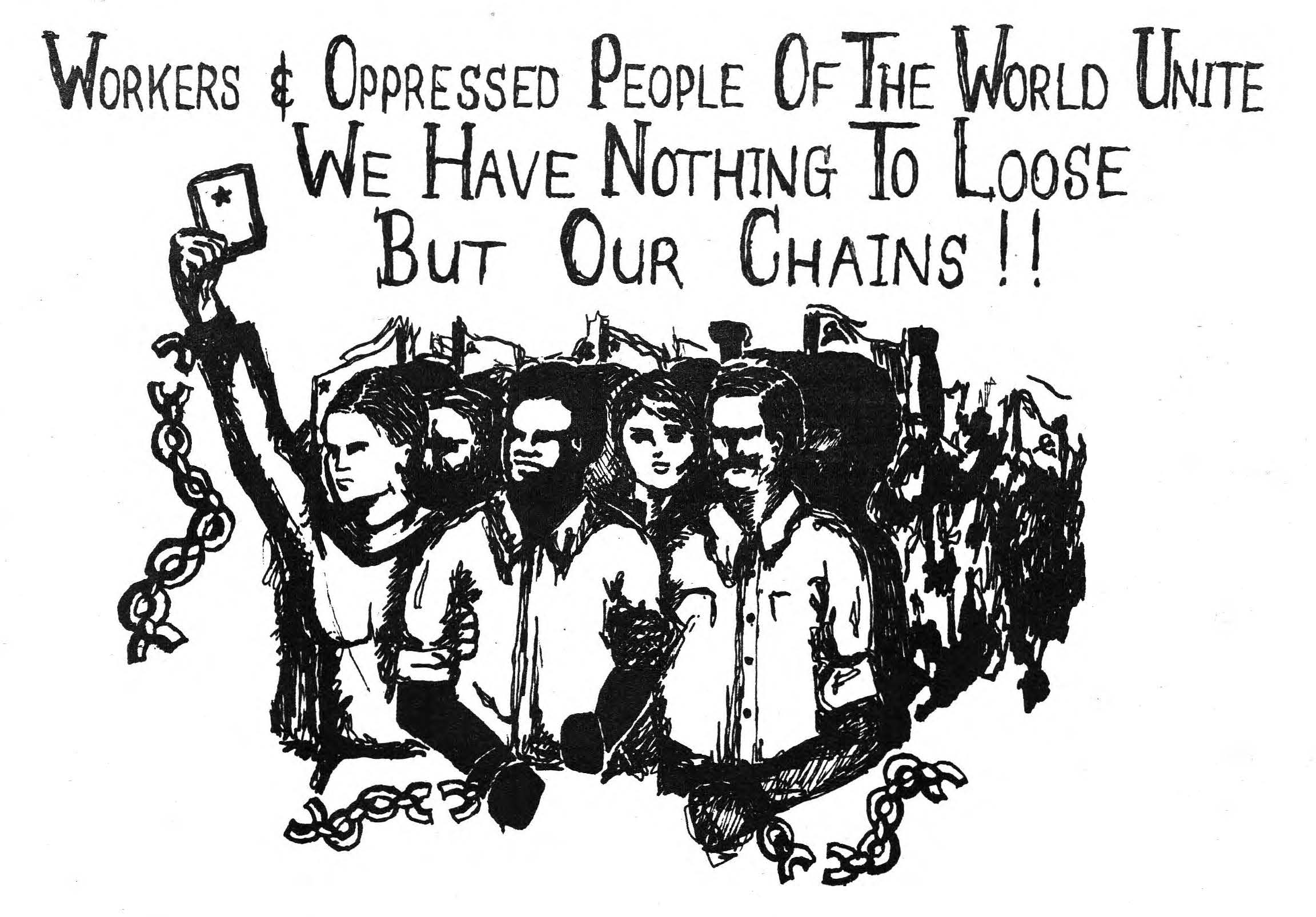
A United Front in the U.S.? by the October League (Marxist-Leninist)
International Report by the Communist League
The Communist League: Class Struggle or Class Collaboration? by the Spartacist League
Which Side Are You On?, (Part 1), (Part 2), and (Part 3) [A Critique of the CL’s International Line] by Carl Davidson
The Reactionary Line of the “Communist League” by the Revolutionary Union
Is the Communist League "Trotskyite": The Spartacist League View
The Future is Bright: A Response to the Communist League by the October League (Marxist-Leninist)
’Leftist’ scabs in Chinatown strike by Morris Wright, Guardian Bay Area Bureau
Better Defender of the Bourgeoisie than the Bourgeoisie Itself – On the ’Communist’ League by the Workers Viewpoint Organization
Primary Documents
California Communist League
Constitution of the Communist League Adopted at a Plenary Session, August 18, 1970
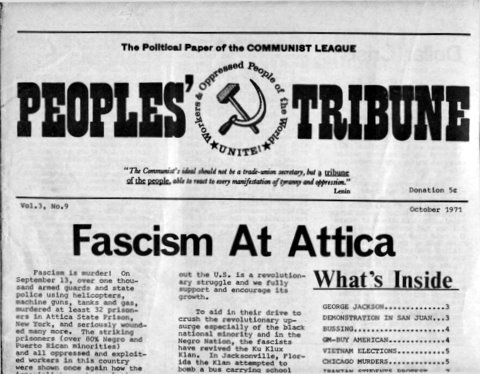
An Outline for the Study of Marxism-Leninism
The CPUSA’s Views on the State; or, Right-wing ’Communism’, a Senile Disorder by C.J. [Proletariat, Vol. 1, No. 1]
What Does Angela Davis Case Mean? [People’s Tribune, Vol. 3, No. 2, February 1971]
What is a Communist? [People’s Tribune, Vol. 3, No. 2, February 1971]
Build a Class Party; Build a Mass Struggle! [People’s Tribune, Vol. 3, No. 3, March 1971]
American Populism: Fascism in Disguise [People’s Tribune, Vol. 3, No. 3, March 1971]
Pollution: Capitalists’ Biggest By-Product [People’s Tribune, Vol. 3, No. 3, March 1971]
Self-Criticism of CL Program [People’s Tribune, Vol. 3, No. 3, March 1971]
What is the State? [People’s Tribune, Vol. 3, No. 5, May-June 1971]
Labor Reform or Revolution? [People’s Tribune, Vol. 3, No. 5, May-June 1971]
Reformism vs. Revolutionary Struggle in the Labor Movement
Nixon’s China Visit: Leopard Hasn’t Changed Its Spots
Defend the National Sovereignty of Pakistan [People’s Tribune, Vol. 3, No. 7, August 1971]
National Minorities in the Labor Movement [People’s Tribune, Vol. 3, No. 7, August 1971]
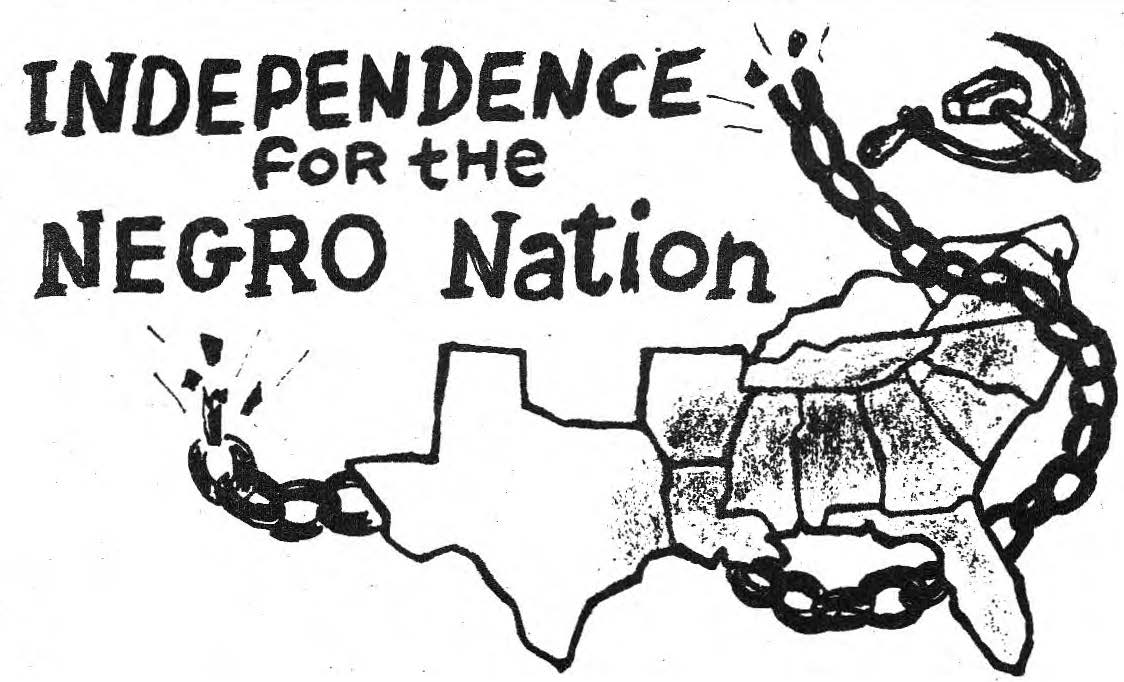
Y.C.L. Formed in San Francisco [People’s Tribune, Vol. 3, No. 7, August 1971]
Fascism at Attica
Bussing: Capitalists Attempt To Spark Race War [People’s Tribune, Vol. 3, No. 9, October 1971]
Build a Revolutionary Press. Build a Communist Party [People’s Tribune, Vol. 3, No. 9, October 1971]
Syndicalism Disarms the Proletariat [People’s Tribune, Vol. 3, No. 10, November-December 1971]
Chinese Meet Nixon – Why?
Rats’ Nest in New York: Revisionist CPUSA Holds Convention [People’s Tribune, Vol. 4, No. 3, April 1972]
Plant Organizing in Detroit [People’s Tribune, Vol. 4, No. 4, May 1972]
May Day 1972: Four years of Growth and Struggle
U.S. & USSR Collude: Attempt to Halt Vietnam Revolution
Nixon-USSR Plan Counter-revolution
Negro Nation Day Festival Big Success [People’s Tribune, Vol. 4, No. 6, July 1972]
Don’t Be Fooled by Angela Davis Acquittal!
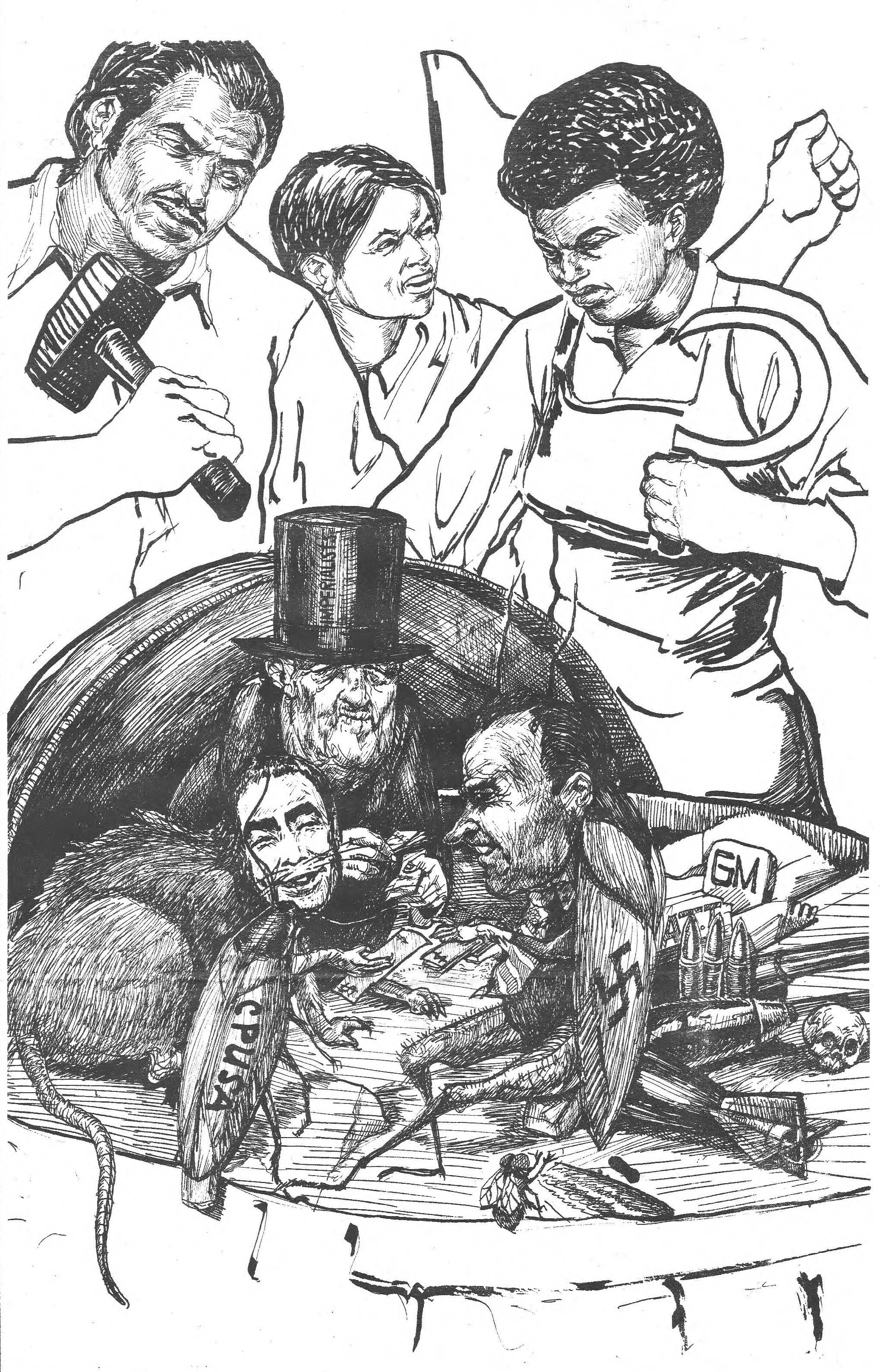
La Colectiva del Pueblo Merges With C.L. [People’s Tribune, Vol. 4, No. 8, September 1972]
Refutation of Syndicalist Error [People’s Tribune, Vol. 4, No. 8, September 1972]
What is Regional Autonomy?
Negro National Colonial Question
Report on the National Question
Political Report on the International Situation [People’s Tribune, Vol. 4, No. 10, October 1972]
New Fascist Laws Against Women [on the ERA] [People’s Tribune, Vol. 4, No. 10, October 1972]
Will There Be Peace in Vietnam?
Statement from Venceremos on Communist League [People’s Tribune, Vol. 4, No. 11, Dec. 1972-Jan. 1973]
Elections Strengthen Bourgeois Dictatorship in USNA [People’s Tribune, Vol. 4, No. 11, Dec. 1972-Jan. 1973]
CPUSA’s Line: Pro Deportation Laws [People’s Tribune, Vol. 4, No. 11, Dec. 1972-Jan. 1973]
Down with the Nixon Gang! [People’s Tribune, Vol. 5, No. 4, May 1973]
Conference of Marxist-Leninists Brings New Unity [People’s Tribune, Vol. 5, No. 5, June 1973]
Nixon-Brezhnev Summit: Internal Weakness Brings Thieves Together [People’s Tribune, Vol. 5, No. 5, June 1973]
Brezhnev Betrays Socialist Revolution
Watergate: Political Crisis Escalates
Communist League Celebrates 5th Anniversary
Gus Hall on Watergate and Brezhnev’s Visit: CPUSA Defends Imperialists [People’s Tribune, Vol. 5, No. 6, July 1973]
Party School Report on the Dictatorship of the Proletariat
Watergate: Platform for Political Exposure [People’s Tribune, Vol. 5, No. 7, August 1973]
Chile – Lessons in Counter-Revolution [People’s Tribune, Vol. 5, No. 8, September 1973]
Detente: “A Mailed Fist in a Velvet Glove”!! [People’s Tribune, Vol. 5, No. 8, September 1973]
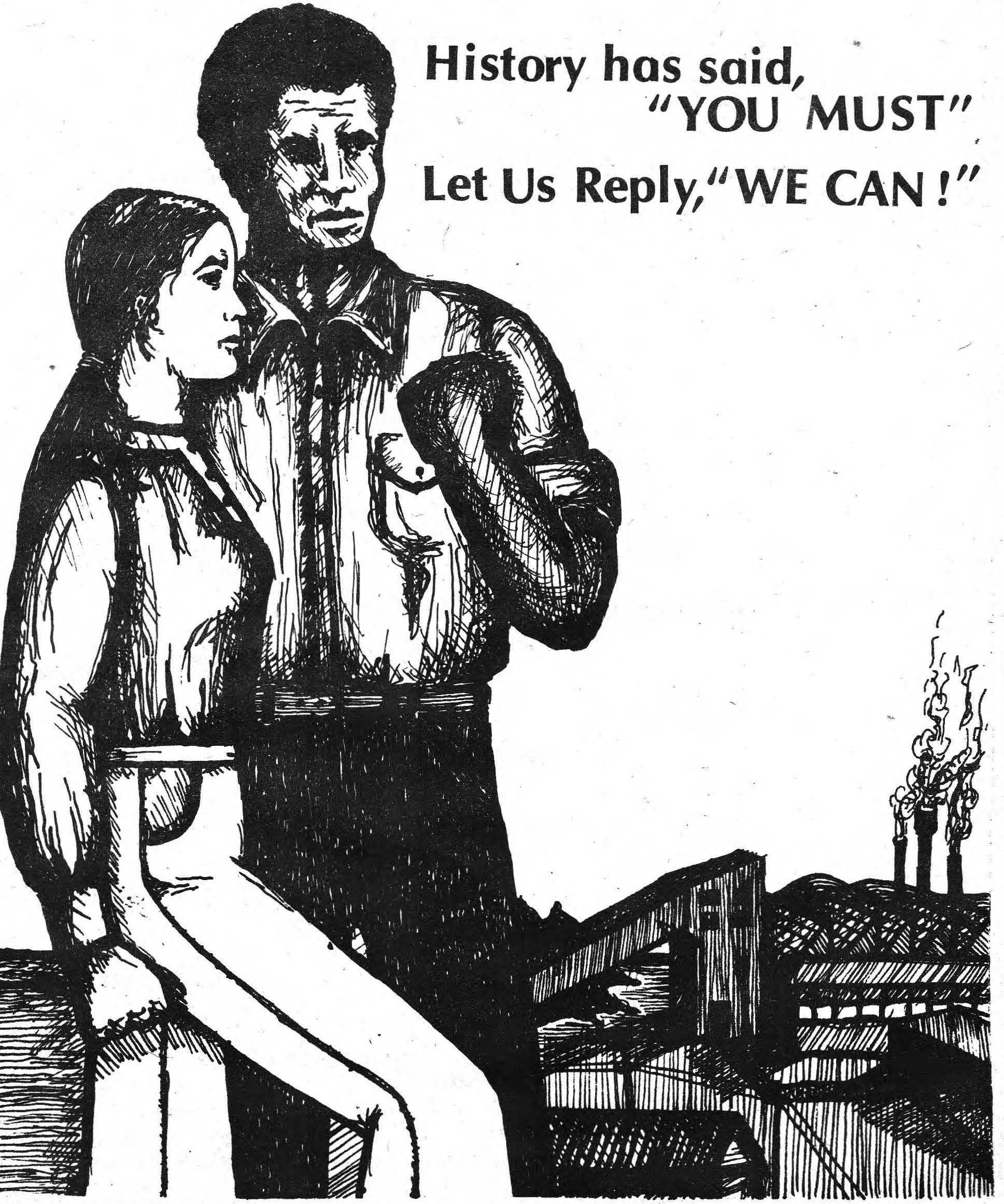
Busing: False Solution to False Problem [People’s Tribune, Vol. 5, No. 8, September 1973]
Stop the Drive Towards Fascism!! Report on the National Situation [People’s Tribune, Vol. 5, No. 9, [no month, 1973]
Intl. Womens Day – Fight for Real – Not Formal Equality [People’s Tribune, Vol. 6, No. 3, March 1974]
Hearst Kidnapping – ’Left’ Terror Aids Fascist Drive [People’s Tribune, Vol. 6, No. 3, March 1974]
United Front: Bridge to Revolution [People’s Tribune, Vol. 6, No. 3, March 1974]
On Proletarian Morality by Nelson Peery [Proletariat, Vol. 4, No. 1, Spring 1974]
The Negro Nation – Colony of USNA Imperialism
Nixon-Brezhnev Summit: War Plans Exposed
CPUSA Rally in Raleigh: Revisionists Launch Offensive [People’s Tribune, Vol. 6, No. 7, July 1974]
Southern Africa: Revisionism – Saboteur of Revolution [People’s Tribune, Vol. 6, No. 7, July 1974]
Regional Autonomy for the Indian Peoples!
Regional Autonomy for the Southwest
Appalachia
Fight for New Elections [People’s Tribune, Vol. 6, No. 8, August 1974]
Fight to Make Every Factory Our Fortress [People’s Tribune, Vol. 6, No. 8, August 1974]
CPUSA Attacks Marxist-Leninists – Oppose Revisionist Offensive [People’s Tribune, Vol. 6, No. 8, August 1974]
ERA – Women in the Class Struggle [People’s Tribune, Vol. 6, No. 8, August 1974]
On to the Congress! [People’s Tribune, Vol. 6, No. 8, August 1974]
Periodicals
People’s Tribune
The Western Worker
Proletariat
Youth in Struggle, Vol. 1, No. 1, July 1975
[Back to top]
American Communist Workers’ Movement (Marxist-Leninist)
The American Communist Workers’ Movement (Marxist-Leninist) [ACWM (M-L)] dates its origin to the Cleveland Draft Resistance Union (CDRU), formed in 1967. As CDRU members began to broaden their political outlook, they formed the Workers’ Action Committee (WAC) and expanded their activities beyond anti-war work to include community organizing, strike support, and the study of Marxism. During this period, the WAC also developed close relations with the Canadian Communist Movement (Marxist-Leninist). The CCM (ML) – which later became the Communist Party of Canada (Marxist-Leninist) – was part of the “Internationalist” tendency founded by Hardial Bains and also included groups in Britain and Ireland. The WAC was attracted to the CCM (M-L)’s openly Maoist propaganda coupled with the aggressive manner in the way it waged its campaigns.
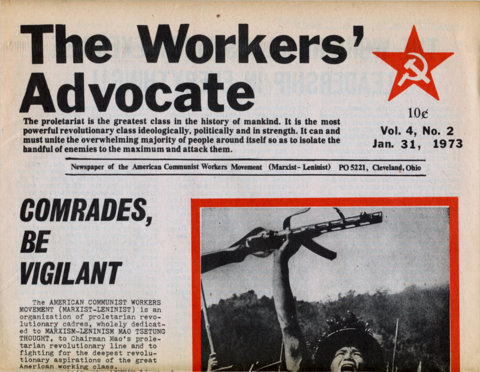
During a “North American Conference of Anti-Imperialist Youth” in Regina, Canada, in May, 1969, the WAC was re-organized as the American Communist Workers’ Movement (M-L). The ACWM (M-L), which soon expanded beyond Cleveland to other cities, was marked by a unique language and aggressive propaganda style, which often borrowed from formal Chinese documents and political slogans of the Chinese Cultural Revolution.
The ACWM (M-L) copied the Internationalist practice of printing a variety of newspapers. Some like the Seattle Worker and the Detroit Workers’ Voice lasted into the 1990s, while others lasted only a few issues. Also notable was its attempt to found the only daily Maoist newspaper in the United States – the People’s America Daily News – which lasted for 77 issues. The ACWM (M-L) would settle on the Workers’ Advocate, published from 1969, as its national voice.
Briefly, in 1970, the ACWM (M-L) held discussions with the Revolutionary Union, but rejected what it felt was RU’s emphasis on building local collectives rather than a national cadre party. In 1971, the ACWM (M-L) undertook one of its most ambitious projects – the formation of the Black Revolutionary Party (BRP) as an attempt to recreate the declining Black Panther Party by copying its platform and politics with a more explicitly Maoist cast. After a few months of publishing a paper and organizing community projects, the effort was abandoned as a failure.
In 1972, the ACWM (M-L) joined with the Communist League and other smaller groups to call for a Conference of North American Marxist-Leninists to unite the different groups into a new Marxist-Leninist party. (Materials on the Conference and the CL’s and the ACWM (M-L)’s subsequent party-building efforts are covered in The New Communist Movement: Intial Party-Building Campaigns, 1973-1974 .)
Historical Works
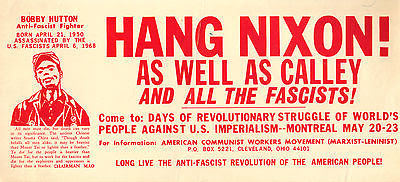
Reminiscences of the Birth of our Trend by Tim Hall
Regina Conference, An Historic Turning Point in Party-building in North America
On
the 20th anniversary of the Internationalists: The
Myth of the Glorious Past–CPC(M-L)’s Pretext for International
Factionalism by the Marxist-Leninist Party
A Short Talk on the History of the ACWM(M-L) and its Method of Work and Organization
The ACWM(M-L)’s Attitude Towards the Panthers and the Black Revolutionary Party
The ACWM (M-L) and the resistance movement
Background Materials
Letter from an Organizer in the Army by the Cleveland Draft Resistance Union [leaflet]
Don’t Be a Sucker (A message to White People) by the Cleveland Draft Resistance Union [leaflet]
Can McCarthy Bring Peace? by the Cleveland Draft Resistance Union [leaflet]
Johnson Quits (April Fool) by the Cleveland Draft Resistance Union [leaflet]
Primary Documents
North American Conference of Anti-Imperialist Youth [Regina Conference] [flyer]
Statement of the Formation of the American Communist Movement (Marxist-Leninist)
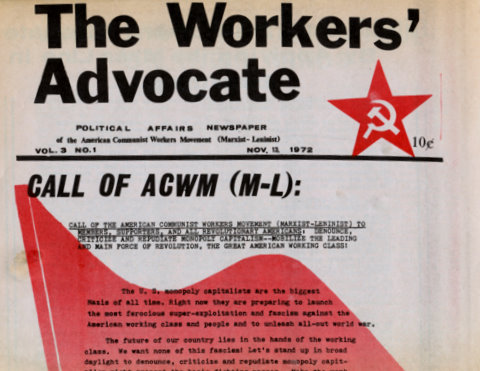
Working People Need Mao Tsetung Thought – A Spiritual Atom Bomb of Infinite Power
The Rise of Fascism
Report on North American Anti-Imperialist Conference
Meeting Announcing the Formation of Rhode Island Student Movement, Anti-Imperialist [flyer]
ASM Rising Nationwide!
Historic Conference Fights for People’s Right to Organize Politically
Combat this Growing Fascism
Worker and Student Mao Testung Thought Propaganda Teams Go Forth Boldly
Revolutionary Masses Expose “Hard-hats” as Paper Tigers and Militantly Resist Attacks of Fascist Police! (leaflet)
AN OPEN LETTER (leaflet)
DENOUNCE THE FASCIST COURTS!! (leaflet)
YOUNG COMMUNISTS FIRMLY OPPOSE THE FASCIST E. CLEVELAND COURTS AND DEFEND THE PEOPLE’S RIGHT TO ORGANIZE POLITICALLY!! (leaflet)
ALL REACTIONARIES ARE PAPER TIGERS (leaflet)

Coming October 1st: People’s America Daily News!
A People’s Press is Born!
Hail the Formation of the Black Revolutionary Party
Politically organize armed defense units by the Black Revolutionary Party, USA
Class Struggle within the Movement is Just Fine! by the Rhode Island Student Movement
Youth and Students Unite!
Organize Actual Struggle Units
Class Struggle at the Place of Work!
Hail the Victory of the Proletarian Revolutionary Line of the Buffalo Student Movement Conference!
How we are building an Actual Struggle Unit of the American Communist Workers Movement (Marxist-Leninist) Part One
Report of the “Down with Bourgeois Individualism” Study Group
Call of the American Communist Workers Movement (M-L) to Members, Supporters and All Revolutionary Americans: Denounce, Criticize and Repudiate Monopoly Capitalism! Mobilize the Leading and Main Force of Revolution, the Great American Working Class! North America News, October 10, 1972
Revolution! Not Reforms! by the Ann Arbor Student Movement
American Revolutionary Youth Launches Campaign to “Study, Grasp, Apply and Propagate Marxism-Leninism-Mao Tsetung Thought to Oppose the Bourgeoisie and Build the Communist Party”! North America News Service, June 19, 1973
Statement of the Association of Communist Workers on the Occasion of Joining with the American Communist Workers Movement (M-L) North America News Service, July 26, 1973
Periodicals
Workers’ Advocate
People's America Daily News
American Mass Line
American Student, No. 1, January 1970
“Revolutionary Student”, No. 1, May 12, 1971
North America News
Rhode Island Student
Mass Line in Culture
Ann Arbor Student
[Back to top]
Sojourner Truth Organization
One of the more innovative groups of the New Communist Movement was the Sojourner Truth Organization (STO), which distinguished itself by not taking its politics from previous models and by creatively crafting a unique set of views and organizational approaches. STO was founded by activists in the RYM II faction that emerged at the time of the last SDS convention in June 1969, and its unique character owed much to these origins.
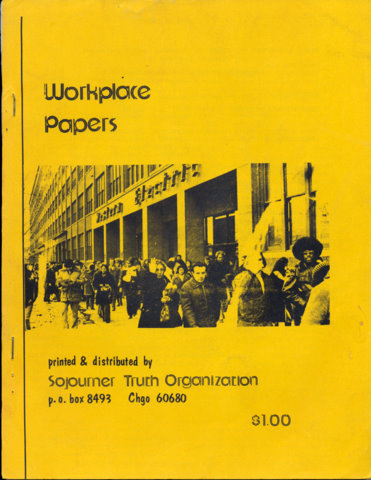
Several positions distinguished RYM II. Unlike the Communist Party, it saw revolution as an immediate question, and opposed Soviet revisionism. Unlike Progressive Labor and the Trotskyists, it encouraged support for national liberation movements and governments that identified with armed struggle against imperialism: Albania, China, Cuba, North Korea and Vietnam. RYM II identified strongly with the Black Panther Party and other revolutionary black nationalists. It saw a material basis for racism in the working class in “white skin privilege.” Finally, unlike its former co-factionalists in Weatherman, RYM II saw organizing American workers as the main basis for revolution in the U.S.
STO took the last two points as its primary focus. It identified less with anti-imperialist governments and Marxist-Leninist parties, and more with the organizations in Europe which were challenging the dominance of bureaucracy-ridden, hidebound unions in workers’ struggles. In 1969-70, it looked more to the League of Revolutionary Black Workers, which helped build revolutionary union movements in Detroit auto plants, than to the street-oriented Black Panther Party. STO argued against simplistic appeals to class unity (“Black and white, unite and fight”) which were grounded on an idealized notion of American working class history and ideology.
STO was involved in several industrial actions in Chicago, their chief locale, and produced polemics that challenged New Communist Movement principles, including the vanguard party, traditional forms communist work in labor unions, and iconic views of communist history. It also brought its anti-racist critique to social movements: the Vietnam peace movement, the Chicago Women’s Liberation Union and others. STO’s sympathies moved from Mao to the post-Trotskyist political-cultural criticism of C.L.R. James, and its identification with the NCM was short-lived.
Because much of STO’s literature is already on-line at the Sojouner Truth Organization (1969-1985) Digital Archive, we are not reproducing an extensive collection of it here on EROL.
General Historical Works
Outline History of Sojourner Truth Organization [from Internal Discussion Bulletin #22]
Critiques and Polemics
White Blindspot by Noel Ignatin and Ted Allen
A Critique of “White Blindspot”: A Contribution to the Struggle against a Petty-Bourgeois Line on the Question of Working Class Unity by Alan Sawyer
On the So-called Bankruptcy of Contract Unionism [Reply to Hamerquist and Ignatin] by Clay Newlin of the Philadelphia Workers Organizing Committee
Don Hamerquist Before STO
The Communist Party and Me by Don Hamerquist
Two More Communist Party Experiences by Don Hamerquist
Discussion Paper on Strategy by Don Hamerquist [1967]
Statement on Party Building by Don Hamerquist [This was a collective effort from the Portland youth section that appears to be from late 1967 or early 1968. In any case it clearly predates the C.P.’s 19th convention in the early summer of 1968.]
Politics and Elections by Don Hamerquist [This was written after the assassination of Dr. Martin Luther King. It was relevant to the upcoming Party discussion of electoral strategy at the 19th convention but was primarily intended for C.P. and non-C.P. leftists that were organizing for the challenge to the Democratic Convention of 1968.]
Notes for Development of a Revolutionary Strategy by Don Hamerquist [1968]
Portland FBI Files on Don Hamerquist [1966-1968]
CPUSA National Committee Letter to Hamerquist [1969]
Portland Youth Club Statement in Response to CPUSA National Committee Letter to Hamerquist [1969]
My Early Recollections of Noel Ignatin by Don Hamerquist
Primary Documents
Towards a Revolutionary Party
The United Front Against Imperialism?
Mass Organization at the Workplace
Fascism in the U.S.? by Don Hamerquist
White Supremacy and the Afro-American National Question
Internal Discussion Bulletin #22, April 1981 [For the General Membership Meeting]
[Back to top]
















































